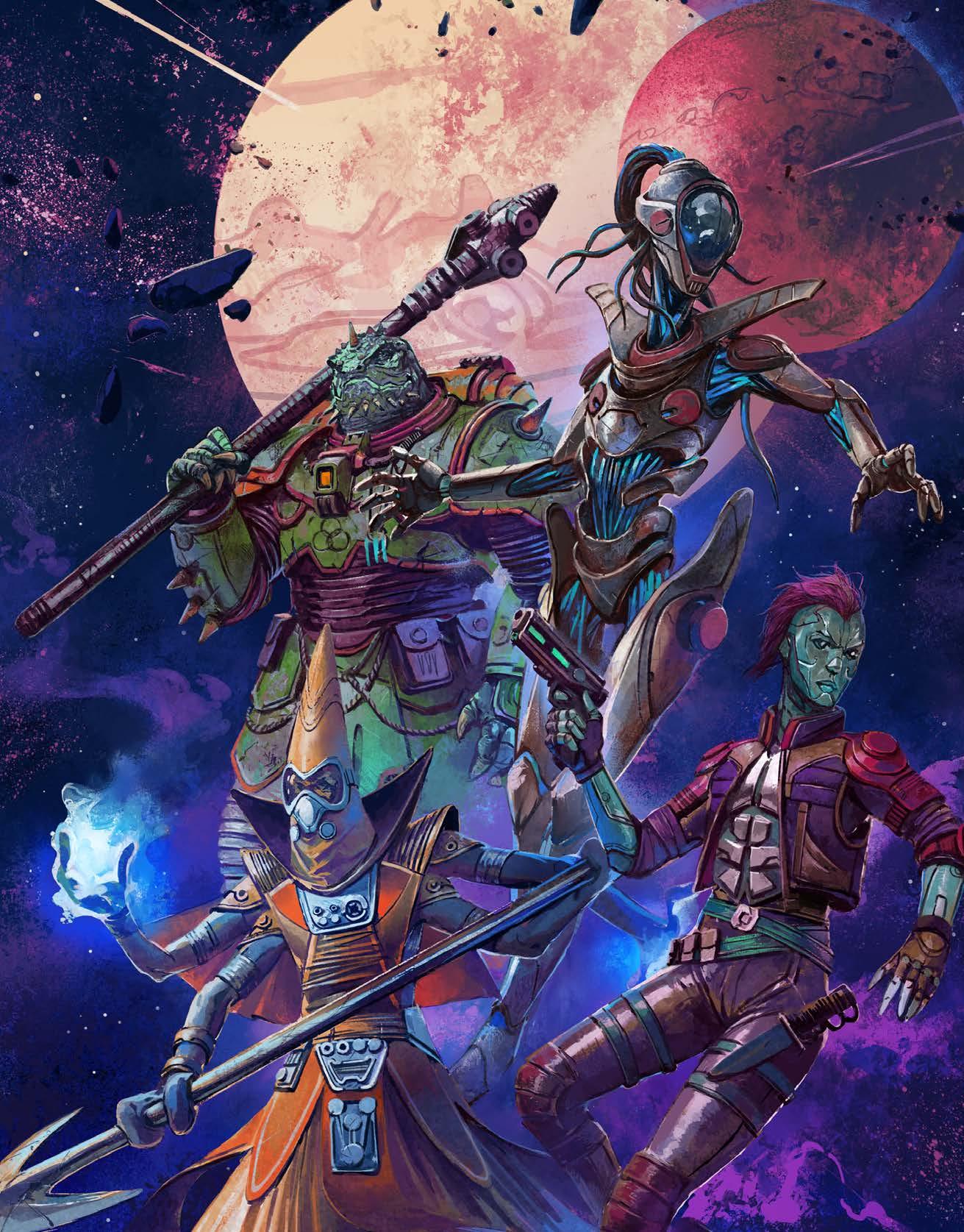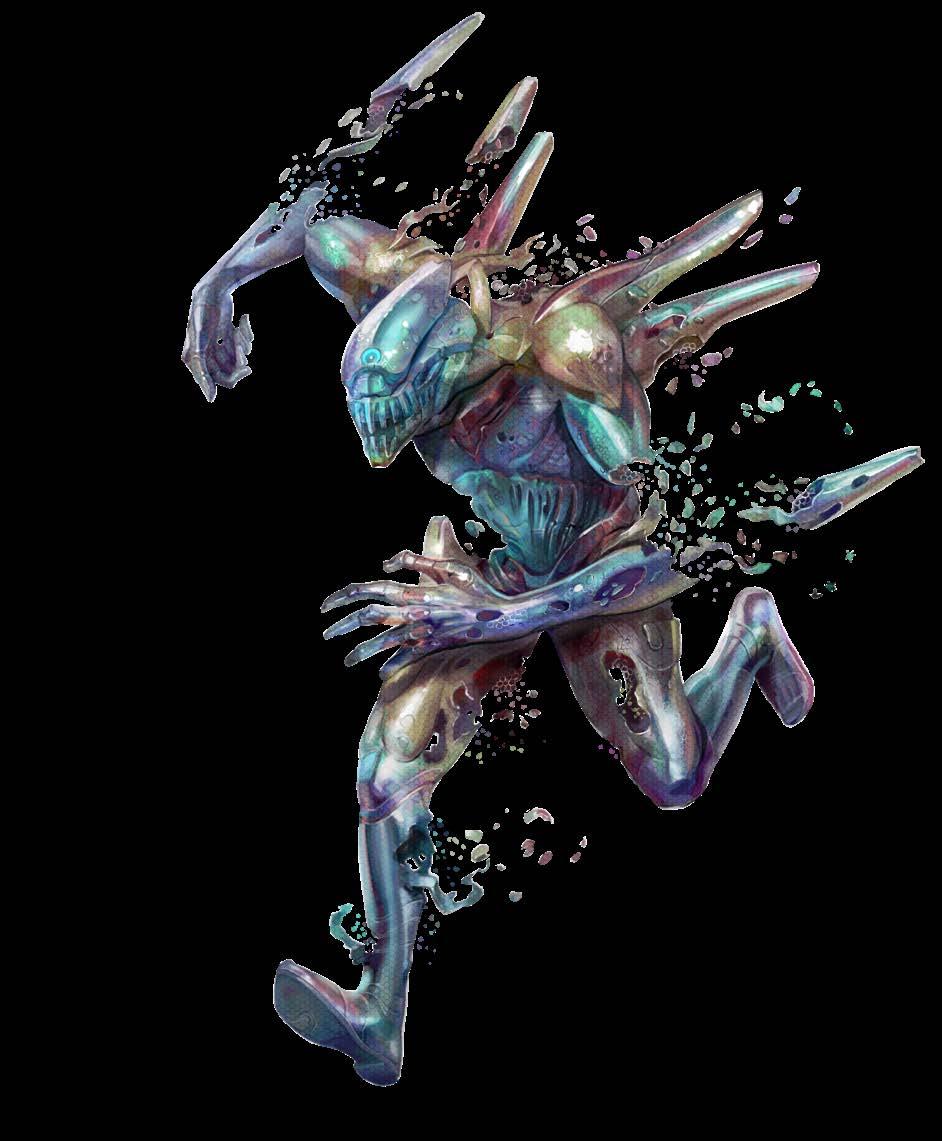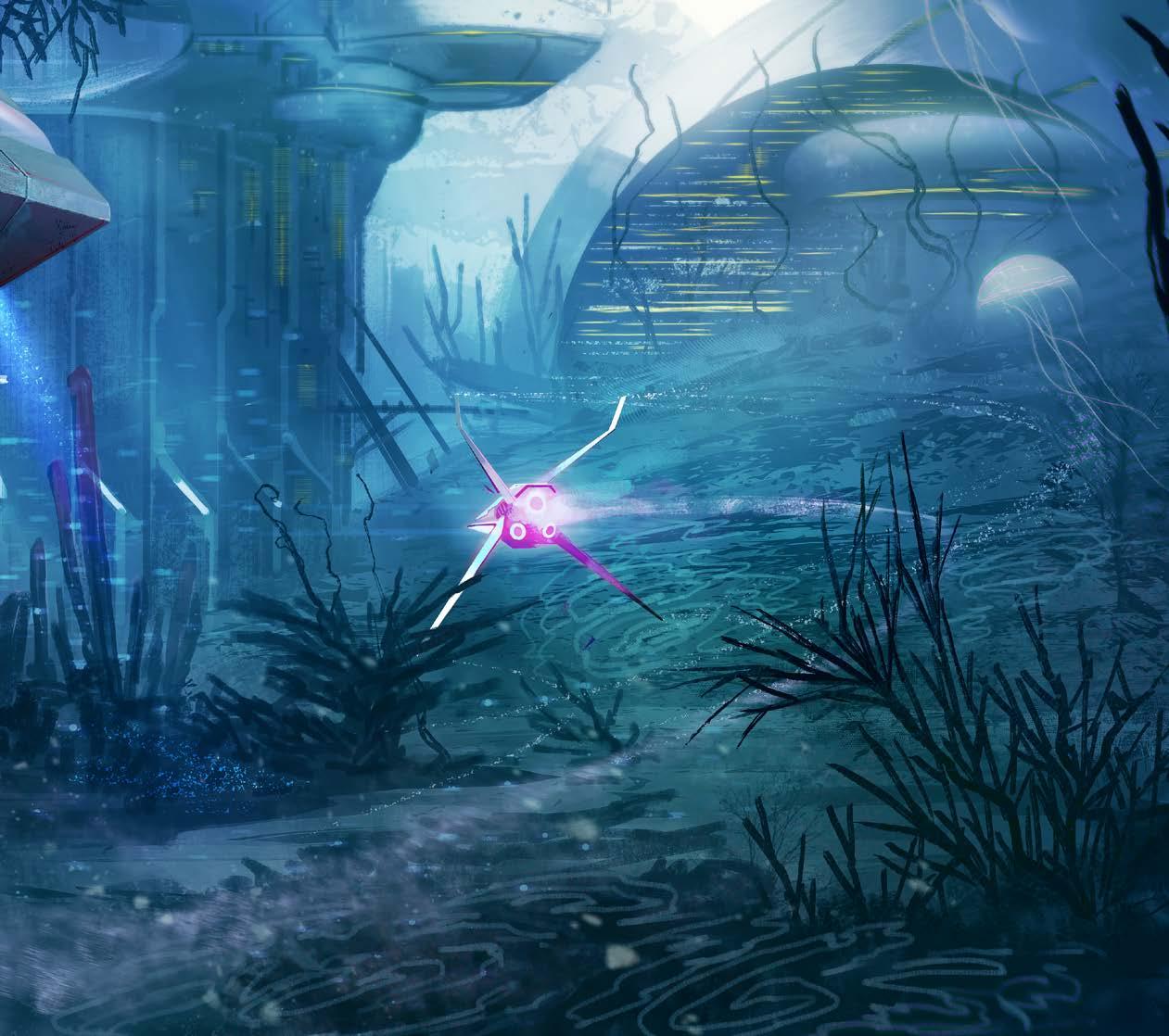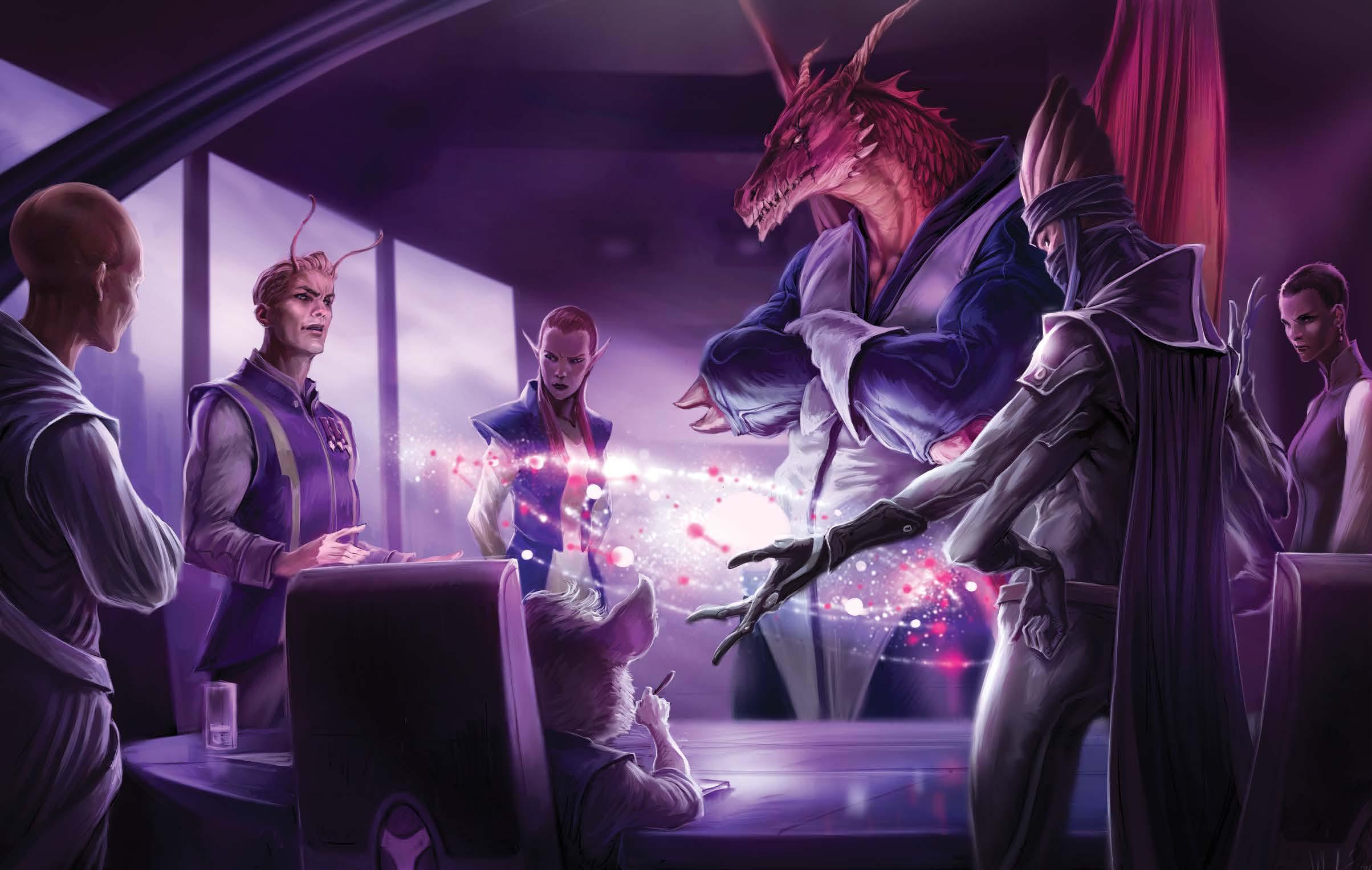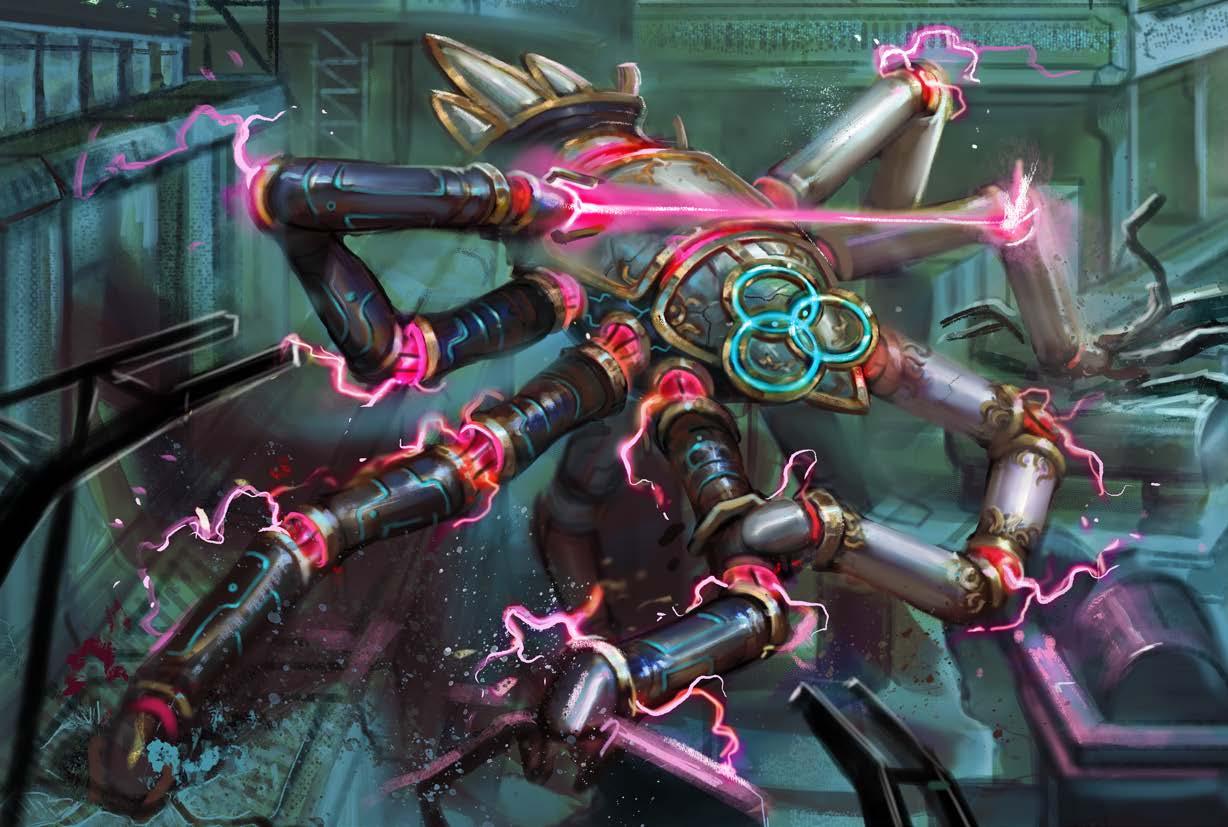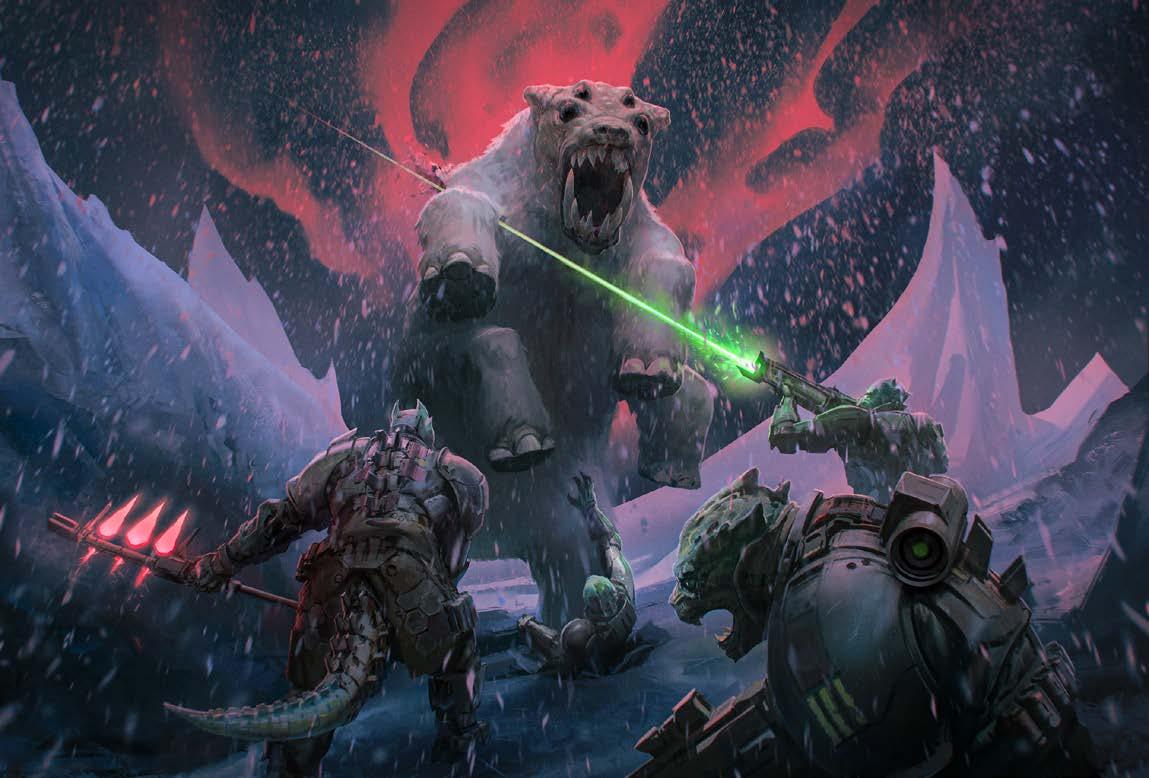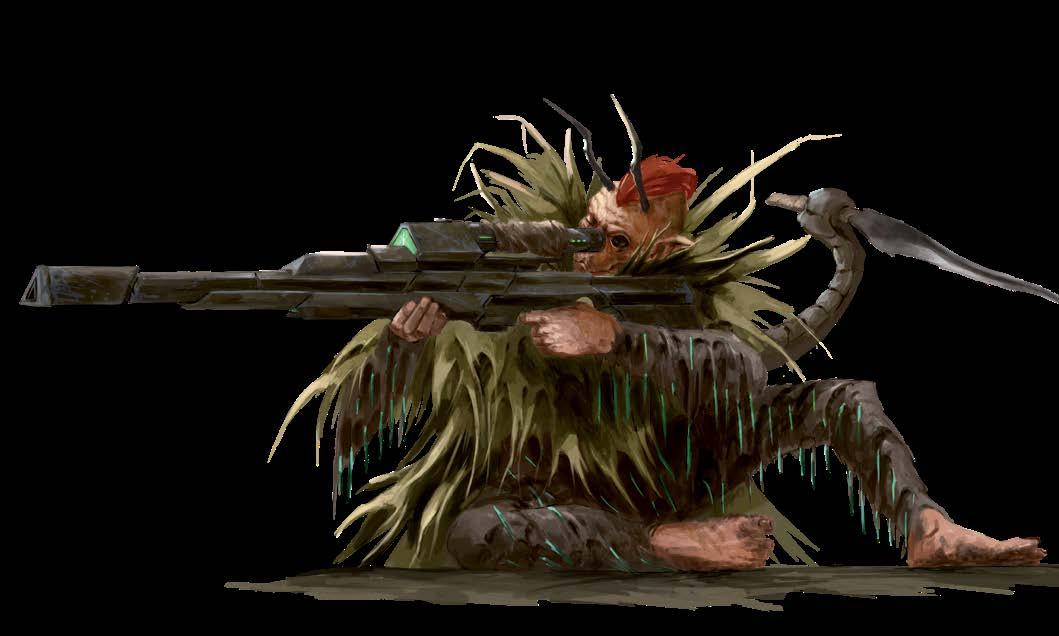PRE-CRISIS DRIFT
As a transitive plane of existence, the Drift’s unique properties and connection to the Material Plane provide a convenient way to travel vast distances at faster-than-light speeds. With a Drift engine, voyages that once took generations might take a week, connecting the galaxy like never before. Despite its dangers, the Drift has become a crucial tool in exchanging ideas, sustaining interstellar trade, accessing distant resources, and maintaining far-flung empires. Post-Gap society wouldn’t be the same without it.
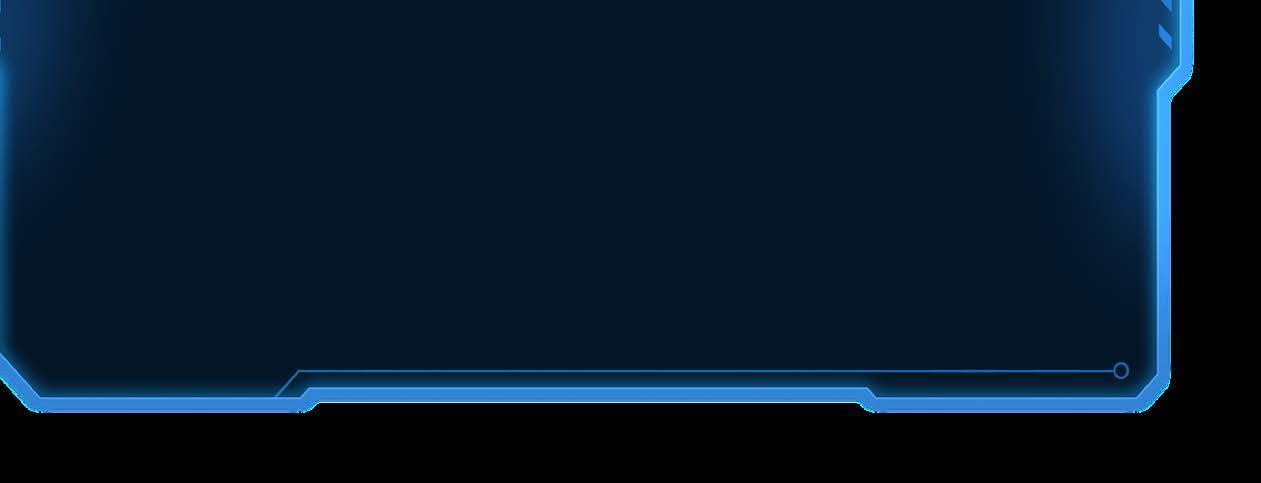
After centuries of connecting societies across the galaxy, the Drift has become the common name associated with the strange, technological plane used for faster-than-light travel. There seem to be as many tales of the term’s origins as there are habitable planets. Some believe Triune bestowed the name, encoded along with the Signal’s many other technological blessings. A pervasive urban legend traces the term “Drift” to an antiquated astrogation term, a way in which starship captains would romanticize the galaxy’s vastness on long voyages, speculating that they were but dust adrift in a vast sea of stars— not helpless, yet vulnerable to the whims of the cosmos.
There are greater mysteries than the Drift’s etymology. Even after centuries of study, it leaves scholars with far more questions than answers. Take the plane’s shrouded origins. Did the Drift always exist, even before the Gap? Did something create it? If so, what or who? To what purpose? If an unknown creator made the Drift, is the plane’s current state similar to its original form, or has it evolved? Did Triune create the plane, tame it to serve its new role, or simply discover and share it with mortal life?
TRIUNE, THE ALL-CODE
Triune came to be three years after the Gap ended in the Pact Worlds system, when three deities of artificial intelligence, constructs, and technology merged into a tripartite divinity.
Brigh the Precursor, who existed long before the Gap, was usually represented by a humanoid construct in bronze with feminine form. She held machines, inventions, science, and technology in her portfolio. Casandalee the Created, meanwhile, was an android who attained divinity in pre-Gap Golarion, in part thanks to Brigh’s help. Epoch the Transcendent, created by the machine inhabitants of Aballon, was the youngest—and also was the entity who contacted the other two deities to unite.
In many ways, Triune’s Signal was as much an announcement of the new deity’s apotheosis as it was a technological gift, and widespread worship followed across the galaxy. The All-Code is especially popular among those who work as engineers, tinkerers, and inventors, as well as among ysoki and android populations. However, Triune’s sudden appearance and popularity concerns skeptics who question the deity's goals, its apparent generosity, and the reason the three deities united at all.
The last substantive Drift insights Triune shared with the galaxy came through the Signal, the All-Code’s divine message. The missive manifested in many forms: as markings inscribed into natural features, as dream-like revelations shared across countless minds, as ethereal songs picked up by satellites, and more. Those who lacked spaceflight technology gleaned other useful insights from the Signal that could revolutionize their technology in a generation. Those already exploring space identified the Signal’s greatest treasure: the technology for Drift travel.
With the Signal, societies made their first forays into the Drift within a few years, and the technology has gradually improved in reliability and speed since. It’s this periodic improvement that tantalizes Triune’s faithful, who insist that somewhere within the Drift or the Signal lies the perfect Drift engine blueprint. It’s up to mortal ingenuity to parse these phenomena and tease out the yet-undiscovered gifts that Triune buried therein.
PLANAR PROPERTIES
To most observers, the Drift resembles a vast space filled with diffuse gases that render the plane’s appearance in cloudy purples and pinks. These gas particles seem to predate Drift travel. Some posit them to be a form of pseudo-quintessence, matter that could coalesce into a more solid planar material given the right conditions. Others, typically those who believe Triune made the Drift, view the plane as Triune’s new body, with all starships passing through the deity’s physical form. Still others consider the gases a natural residue leftover from whatever chemical and subatomic reactions created the Drift. Whatever the case, the gases are largely inert and harmless, swirling in the Drift’s expanse without apparent gravity or alignment.
Everchanging Space
The Drift’s faster-than-light travel potential lies in its dynamic morphology. At any time, different portions of the Drift are in contact with one another, like fibers in a crumpled cloth. As one patch comes in contact with another, objects there can imperceptibly shift from one to the next, becoming stranded as the Drift continues to contort and those two patches separate. In addition to transposing a starship from the Material Plane to the Drift and back, a Drift engine helps predict and navigate these intersections, using each like a stepping-stone to cross the Drift in huge, circuitous, periodic leaps guided by Drift beacons. The best engines not only help predict intersections, but they also bridge those gaps quickly, enabling increasingly efficient voyages.




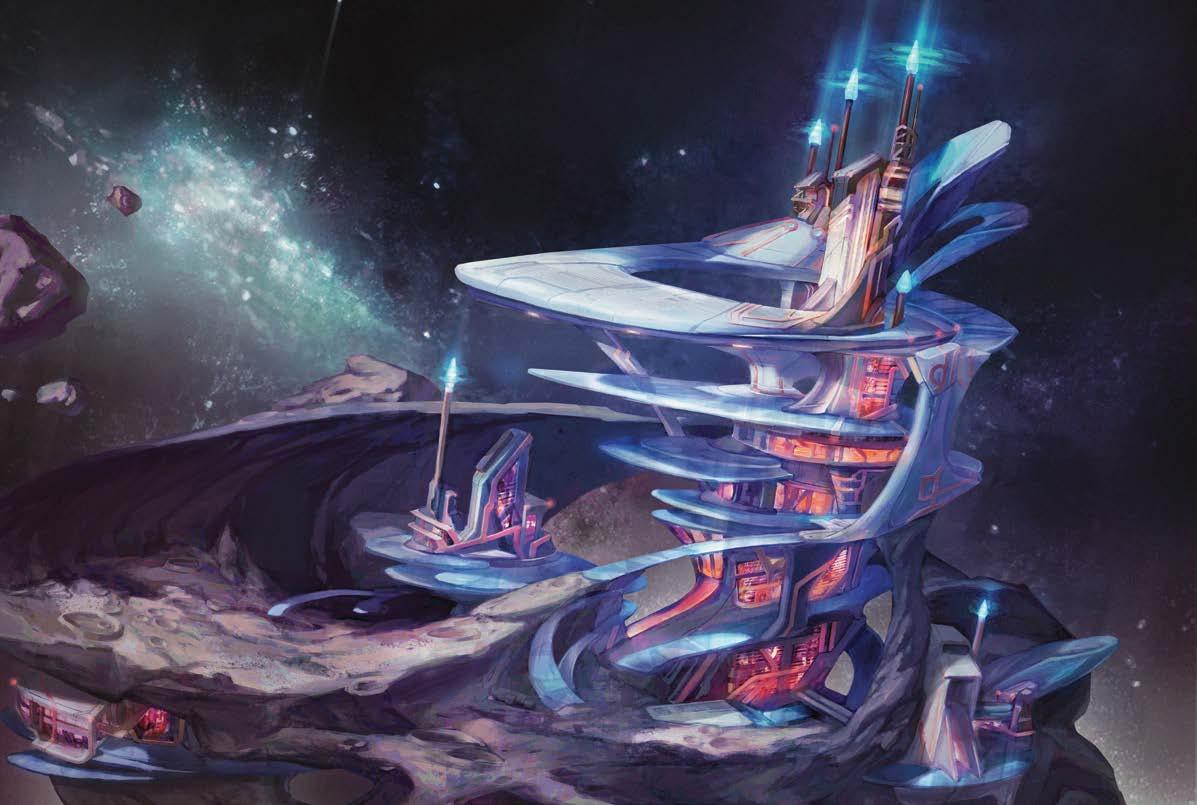
Fortunately, these intersections cover large areas, so starships traveling together are rarely separated, and instances of immense starships and planetoids being ripped apart by this movement are so rare as to be apocryphal. Unfortunately, these overlaps can also bring unexpected hazards into a starship’s path. Thus, starship crews are wise to remain vigilant even when traveling through seemingly empty space, as there’s always a slim chance that some unlikely obstacle might appear out of nowhere.
Magical Limitations
The Drift is accessible solely by technological means. Attempts at magical entrance (including summoning creatures) fail outright. The same isn’t true for travel within the Drift, where magic moving between two points in the plane works normally. The technological barrier hasn’t gone unchallenged. One notable attempt to access the Drift by magic involved a stolen Drift beacon placed within the Drift, a powerful artifact repurposed for the experiment on the Material Plane, a sect of stubborn Elorituans, and an ambitious ritual that tore a hole between the beacon and artifact. The gateway destabilized, destroying the ritualists and creating an anomalous field of magic around the site. The so-called Failed Gate serves as a cautionary reminder for those who dare test the Drift’s magical limits.
A Growing Infinity
The Drift is effectively infinite, with no discernable edge for explorers to discover even after multiple lifetimes. On a cosmic level, though, the Drift is expanding. Whenever a starship
enters the Drift, the plane absorbs a sliver of some other realm. These pieces might originate from the Elemental Planes, the Material Plane, or even the likes of Nirvana or Hell. Their sizes vary, though the matter’s size seems to correspond to the length of the voyage and the starship’s scale, and the chunks maintain most of their physical and extraplanar traits.
The exact reason for this planar absorption remains a mystery, albeit with three leading theories. The Holepunch Theory insists that the act of entering the Drift punches a brief hole in reality, and in an act of planar cavitation, bits of the multiverse get sucked into the hole as it reseals. The Trawler Hypothesis enjoys less support, positing that movement through the Drift (rather than moving into it) creates ripples that snag on other bits of reality, dragging them into the Drift as a starship moves like debris in the wake of a boat. Most nefarious of all is the Ravenous Reset, a belief that Triune, a sentient Drift, or both are consuming the multiverse, eventually reprocessing that material into the next version of reality. In this last theory, every Drift engine activation is like an infernal contract whose small print condemns a fraction of known space.
That said, 300 years have only scratched the surface of the plane’s processes and trajectory. With limited erosive forces, do absorbed extraplanar elements break down, eventually adding to the colorful clouds throughout the Drift? Is the Drift’s expansion fueled wholly by stolen matter, or is there another force at work? Is the Drift growing toward some end state? And how do the other gods feel about its growth? These and other questions inspire scientists and conspiracy theorists alike.
BEACONS AND DISTANCES
Given its dynamic morphology, distance in the Drift works a little differently than what conventional thinking defines as close and far, especially if one intends to travel outside their current star system. With Drift travel, physical distance between the starting point and the destination on the Material Plane doesn’t impact total travel time. Instead, the duration depends heavily on the density of Drift beacons near the destination. The more beacons there are, the faster the journey, giving rise to designations of Near Space (regions where beacons are fairly plentiful) and the Vast (where beacons are rare).
Drift beacons have varied origins. Triune’s faithful build many, with the most prominent workshops found in Triune’s sacred city of Alluvion in the Drift. Once prepared, interstellar tugs transport these technological buoys to various points on the Material Plane, placing them according to closely guarded guidelines. Many other Drift beacons simply exist, though it’s unclear whether Triune willed these beacons into being shortly after the Gap or if these were preexisting structures repurposed to enable Drift travel. What’s more, beacons periodically arise throughout the galaxy without warning. Powerful organizations sometimes attempt to relocate Drift beacons to more advantageous positions, but the beacons demonstrate a puzzling willfulness, either eventually drifting back toward their original location or even teleporting back without warning. Drift beacons display a wide range of shapes and sizes. Alluvion’s beacons usually reflect Triune’s technological
aesthetic, with a metallic exterior, satellite dishes, and antennae. Beacons created by divine will or equally inscrutable means can resemble anything: tiny planetoids, colorful starships, ancient temple complexes floating through space, immense petrified creatures, and more. Adding to their complexity, many Drift beacons attract creatures who live on or around the structures, even constructing additional features to turn their beacon into a thriving settlement. These additions rarely impact the beacon’s functions, and Triune’s faithful largely condone the habitation, training locals to better maintain and repair the sacred sites.
DANGERS AND TREASURES
The Drift is so vast that only a fraction has been explored. The plane’s strange form makes it difficult to chart, and even returning to the same feature on the Drift is tricky. An exceptional pilot can astrogate by monitoring beacon signals and course-correcting flight paths, but the most reliable way to reach a specific point in the Drift involves beacon codes. Each beacon code is a complex data sequence associated with a specific Drift location and is distributed by the church of Triune. When entered into a navigation computer, the code provides an extraordinarily accurate flight path to the destination. Most codes remain viable for a limited time, either due to the Drift’s everchanging nature or programmed obsolescence. However, some codes remain viable indefinitely, and derelict starships occasionally retain these ancient codes like forgotten treasure maps to Drift secrets. Triune’s faithful typically install software safeguards into beacon codes so that they’re not shared widely, keeping sensitive locations secure. Considering the Drift’s hazards, the priests’ caution and secrecy seem well-intentioned. In addition to the Drift’s disgruntled and often hostile creatures that were torn unwillingly from their home planes, planar debris with opposing properties sometimes collides to create dangerous conditions, such as steam hurricanes where elemental water and fire meet, or aligned lightning where chunks of Elysium and Abaddon draw too near each other. Experienced crews share harrowing stories of magicless doldrums, hungry dreadworms, or close encounters with the infamously lightless Umbra— sometimes all on a single trip. Yet trips into the Drift often prove lucrative. Locations like the alien scrapyard collection known as the Heap or the remnants of an extinct civilization on the Adamant Fragments are effectively treasure troves for the few who can reach them. Ambitious governments, companies, or private collectors occasionally place high bounties on such alien tech with the hopes that salvaged sciences might help advance their
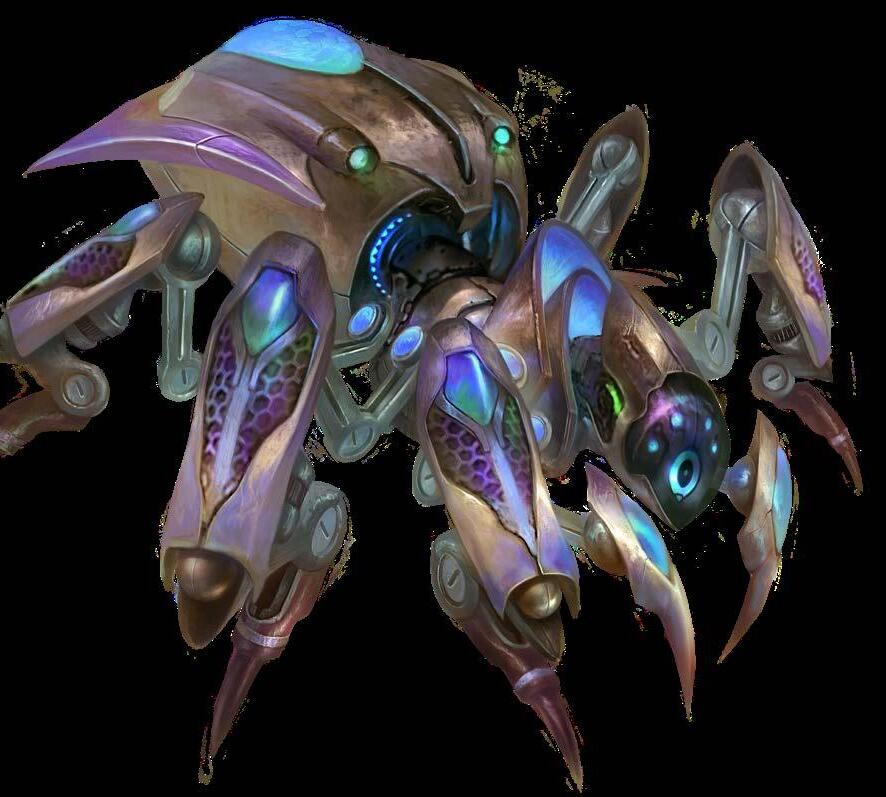




own technological prowess or wealth. That said, sifting the credible reports from the tall tales of Drift bonanzas circulating the infospheres is difficult.
ALLUVION
Another reason Triune’s faithful keep a tight lid on Drift beacon codes is because somewhere in the Drift—migrating according to the triune deity’s will—lies the machine god’s home: the city of Alluvion. Much of the city’s infrastructure occupies the flat surface of an egg-shaped asteroid that floats above a sea of unfathomable darkness with gravitational pull. Like the Drift, Alluvion’s landmass has increased over time, slowly incorporating matter from the broad belt of extraplanar debris orbiting the city. As new real estate forms, Alluvion’s inhabitants eagerly claim it, creating a radiating expanse of new districts.
Governed by the high priests of Triune, Alluvion’s population consists primarily of androids with a large anacite minority. Verthani, ysoki, and other beings comprise the remaining 10%. Because Alluvion is accessible only by travelers granted its unique beacon code, the population consists largely of engineers, scientists, and other technological professionals, each motived to innovate and perfect their respective industries.
The Temple of Triune, also known as the Nexus, serves as the architectural and spiritual centerpiece for Alluvion. Within the pyramidal structure, the faithful commune with the All-Code. Dozens of sacred data silos surround the Nexus, each storing impossibly vast information about the multiverse that only a trusted few are permitted to access.
At the Manufactory, Triune’s faithful build new Drift beacons. The anacite priests managing the site maintain relatively lax security, knowing that Alluvion’s defenses and single-minded devotion to Triune prevent most crimes. Nonetheless, several past heists have absconded with newly built beacons, each of which is nonfunctional until placed in its ordained location and activated by a Triunite priest.
DRIFT CREATURES
In addition to Alluvion’s inhabitants, the Drift is home to myriad other creatures, with many more likely unknown to and undiscovered by mortal researchers. Many of these beings originated on other planes, finding themselves inadvertently relocated thanks to Drift engines’ operation. Most of the outsiders abducted in this way remain extraplanar outcasts, yet an increasing number have naturalized, even shedding their creature subtypes and gaining Drift-oriented abilities.
The Drift’s unique properties also give rise to unique creatures. Driftdead arise from creatures who die in the Drift while experiencing strong negative emotions. Travel logs describe the lamprey-mouthed garaggakals, time-eating beings with neuron-shaped bodies, and crystalline paraforans. As if these weren’t dangerous enough, the Drift shelters sinister cults, secret pirate hideouts, and confused creatures that lash out at passersby. Of course, the Drift also contains friendlier beings. Pockets of land from Nirvana and Elysium might host good outsiders who can aid peaceful visitors. The Bulwark, a hill plucked from Heaven and guarded by an archon, appears to travelers with surprising frequency, making it a fixture in explorers’ tales.
FASTER THAN DRIFT?
Inhabitants of Alluvion say that you can tell when the city is about to teleport based on several obelisk-shaped beacons spaced throughout the city, which glow green and hum a seven-note tone when activated. This alert lasts for several minutes before the space around Alluvion warps and folds, bringing the city to a new location in the blink of an eye. Many find the experience comparable to the entrance and exit into the Drift via Drift engines. Some curious minds note that this technology defies common laws of Drift travel, leading to speculation that Triune has withheld some far faster form of travel from the masses. The All-Code’s faithful seem unperturbed. To them, achieving any greater travel technology requires research and development, which are sacred processes.
The Spectra
No discussion of the Drift is complete without spectra. The spectra are the Drift’s eminent outsiders who were unknown prior to the plane’s discovery. Much of spectra’s behavior suggest they are Triune’s creations, for each champions the Drift and technological development, paralleling the All-Code’s goals. New spectra now arise naturally from the intermixing matter pulled into the Drift by starship travel and, because they’re comprised wholly of the Drift, spectra can slip in and out of the plane with ease. Their technological components provide spectra a natural machine telepathy, letting them communicate with computers and each other.
Although varied, spectra have several commonly observed forms. Iridias appear the most on other planes, acting as evangelists who often reintroduce Triune’s Signal to parts of the universe where the message was lost or ignored. The tree-like wyspirias appear to be collectors of information, or act as occasional mediators between conflicting groups. Aspecnas, identifiable by their fan-shaped tails, are guardians of the Drift itself. Though known as “Drift angels” for steering those moored out of the Drift, they are formidable foes to anyone looking to claim a part of the Drift as theirs. Lastly, the faceless nacreas with their rings of solid light perform maintenance on the Drift beacons, as well as on Drift engines that have broken down.
While most tales of spectra encounters end peaceably, the beings take their duties seriously and intervene forcefully where they perceive threats. Given the spectra’s implicit connection and subservience to Triune, skeptics can’t help but question whether the spectra are the All-Code’s vain attempt at creating new life or enforcing its hidden agendas.
INTO THE UNKNOWN
The above represents a tiny fraction of what exists in the Drift. For many, the convenience of Drift travel overshadows any serious examination of its flaws, much less the galaxy’s reliance on the technology. For others, the Drift represents an imperfect form of what could be—a simplified version of some greater whole that Triune hopes mortals might refine and realize.
DRIFT IN CRISIS
Travel through the Drift has failed, stranding countless voyagers and causing widespread panic. In the aftermath, as the Drift shudders back to unpredictable functionality, the galactic community scrambles for answers and desperately fights to maintain order amid the chaos. This section presents the major effects of this galaxy-spanning disaster, as well as some of the most common theories regarding causes of the Drift Crash.
In addition to these broader effects and theories, details appear in gazetteers for various galactic locations (pages 20–29), factions (pages 30–37), and the many adventures in this book (pages 58–139). You’ll also find competing rumors on page 19.
EFFECTS OF THE DRIFT CRISIS
Ongoing complications are divided into the brief, catalytic Drift Crash, the continuing effects of the Drift Crisis, and the stories of survival and opportunism that follow in its wake.
Drift Crash
In a single devastating instant, the Drift failed. Most starships in the Drift at the time seemed to vanish, with many stranded as the Drift’s physics warped and evolved around them. Other starships were ejected from the Drift, not just dumped into random places on the Material Plane but hurled into the Inner and Outer Planes, where Drift technology couldn’t facilitate their return. Travelers attempting to enter the Drift found it inaccessible. Communications, usually sped by the Drift, bounced back to senders. Triune fell silent.
Across the galaxy, other Drift-related phenomena struck suddenly and seemingly at random. Drift beacons flickered, shut down, moved, vanished, or even exploded. Creatures native to the Drift suffered injury, malfunction, and transformation. Portions of the Drift suddenly seemed to flow in reverse: rather
DRIFT TRAVEL TIMES
Until the Drift Crisis is resolved, beacons and Drift travel don’t operate as expected. Designations of Near Space and the Vast no longer apply to travel times. Instead, relatively swift Drift travel is possible only to so-called Harbors, such as Absalom Station in the Pact Worlds and a handful of other desirable locations. Most other travel is ploddingly slow, and regions referred to as Slowspace seem especially resistant to Drift navigation. Many traveling within a single system use non-Drift travel, just to be safe.
DESTINATION DRIFT TRAVEL TIME
Harbor 3d6 days
Slowspace 10d6 days
Other Destinations 7d6 days
than absorbing parts of other planes, fractions of the Drift spontaneously seeped into the Material Plane. In some places, this manifested as extraplanar detritus; in others, the unstable technology bonded to living creatures.
This first day of devastation is known as the Drift Crash or, colloquially, as just the Crash.
Ongoing Effects
In the weeks that followed, the Drift gradually began to right itself, resuming some semblance of its past function. Those travelers who reached it in those earliest days found a chaotic realm shaken by unknown forces. Empires spread over multiple systems began to fracture, their more remote and disloyal colonies rebelling when their newfound isolation became apparent. Distant allies fell silent, and galactic corporations began hemorrhaging money. The Drift had facilitated the creation of a galactic economy, and that network had shattered.
Today, Drift travel functions intermittently. Travel times are considerably longer, and voyages are more hazardous thanks to extraplanar weather, erratically aggressive spectra, Drift engines that sometimes short out from unfamiliar conditions, and other threats. Yet, a few strange exceptions exist. Some worlds once part of the Vast have become mysteriously much more accessible. Although some of these locations thrive under their new circumstances, many have either become de facto destinations for those fleeing dangerous conditions elsewhere, premier real estate over which galactic governments fight, or both. Overall, heightened risks and lingering uncertainties mean that much of the galaxy remains fragmented.
Communications are less reliable than travel, with many transmissions arriving months late, scrambled beyond intelligibility, or not at all. Against this backdrop, countless organizations, governments, and private patrons are desperate to restore the status quo, exploit the chaos, identify the Drift Crisis’s cause, or simply survive.
Many of Triune’s faithful are equally panicked, for throughout this, Triune seems more distant than ever. In Alluvion, the faith threatens to tear itself apart as worshippers seek answers or assign blame. Within many urban centers, Triune’s faithful are blamed for their neighbors’ hardships, becoming scapegoats, pariahs, and targets of violence.
The ramifications of the Drift Crash—which rippled across the entire galaxy and even other planes of existence—and all the days that followed have come to be known as the Drift Crisis.
Survival
The Drift Crisis plays out across countless worlds, with many villains, allies, and opportunists. It is a galactic event on a scale not witnessed since the Gap itself. Although it’s a simple thing to summarize—the Drift Crisis is a devastating break in the Drift, which triggered a galaxy-wide catastrophe in transit and communications—the event’s full effects and ramifications can never be fully catalogued. The Drift Crisis is chaos and pandemonium, opportunity and hardship, desperation and loss.
Drift Crisis stories often feature themes of isolation, adaptation, and survival. Some people were swallowed by the Drift. Others were ejected and cast adrift, becoming stranded in pocket dimensions, on other planes, or in distant regions of space—sometimes centuries of sub-light travel away from the nearest port. Some struggle to return home, while others choose to give up their old lives and make the best of their new reality. Many don’t survive. Each of these missing souls left behind contacts, friends, or family. Although these stories affect individuals, they’re repeated millions of times over across the galaxy. With communications ineffective or nonexistent, many people have turned to detectives, diviners, psychic investigators, and less-scrupulous mercenaries to locate their lost loved ones or to reestablish contact that was severed. Many who can’t afford such specialists set out to find their lost ones independently, typically alongside others who have lost.
While some seek missing people, others seek answers. Independent and government-funded scientists, academics, media outlets, freelancers, and adventurers turn their attention
to researching the Drift and Drift beacons, as well as sifting through the countless theories. Many investigators have formed informal networks and alliances, pooling their resources, information, and breakthroughs for the good of the galaxy.
Prominent organizations and corporations mount far more organized inquiries into the Drift Crisis. Primary among them is the Church of Triune, which was devastated by the loss of the Drift, the silence of their god, and the blame the public at large has placed upon it for the Drift Crash and Drift Crisis; the Starfinder Society, who are notorious for meddling in galactic affairs; and the Hellknights, particularly the Order of the Eclipse, who have shifted many of their resources toward rebuilding galactic communications and deciphering the Crisis’s cause. Although these powerful groups may seem like welcome allies to independent investigation networks, many people believe such organizations serve themselves more than the galactic community. Some people question the transparency and answers such groups would freely offer if they discovered the true cause of the Drift Crash—particularly the Hellknights, who tackle their investigations with their usual zeal and think nothing of “commandeering” the information acquired by independent networks for their own use.
Opportunism
Rather than solve the Drift Crisis, others aim to profit from it by acquiring wealth, power, or territory, or indulging in their vices. Countless inventors, corporations, and starship manufacturers race to create new technology as solutions or workarounds to the Drift Crisis, primarily in the fields of
communication and transit. Numerous starship manufacturers tout new means of faster-than-light travel, utilizing technology, magic, or interplanar shortcuts. The sale of constellation orreries, elemental engines, first drives, and Helldrives (Starship Operations Manual pages 10–11) have increased dramatically, and many captains are desperate to secure one of the secretive witchwyrds’ planar aperture drives or unlock the secrets of the ancient fold gates scattered throughout the Vast. Inspiring as these technologies are, they’re costly.
The Drift Crisis is also an excellent criminal opportunity, with countless con artists and scammers offering miracle technologies they claim are immune to the Drift Crisis, gathering donations to fund research, or offering to locate missing persons—for an advance fee. Piracy grows, with more drawn to theft and stealing greater profits. Thanks to limited Drift travel, in-system transit increasingly relies on predictable flight paths that attract bandits. The most enterprising criminals even use the Drift Crisis as cover for outrageous heists, such as stealing entire space stations or moons!
Other opportunists crave power and influence. The Aspis Consortium (page 30) has leveraged its vast inventory to supply and bring order to isolated planets, but only in exchange for generations-long trade concessions, key property, or usurious fees. Military groups like the Corpse Fleet (page 22) have begun capturing far-flung worlds that have no chance of reinforcement. Even upstanding forces like the Knights of Golarion see this as an ideal time to corner and eliminate threats. All the while, groups like the Moored (page 35) view the Drift Crash as a blessing, using it to drive home the message that the galaxy should never have relied on so sinister a tool.
CAUSES OF THE DRIFT CRISIS
The Drift Crisis is a time of chaos, confusion, and struggle as people across the galaxy repair the damage and seek answers. Speculation, rumormongering, and misinformation are rampant, with false prophets and profiteers seeming as prevalent as communities and organizations endeavoring to understand the impact—all actors with varying motivations. Amid the rumors lie grains of truth and well-reasoned theories, but so, too, have factions contributed purposeful obfuscation, scapegoating, and misinformation. All the while, Drift travel has become less reliable, making it ever harder to exchange information and driving isolated communities to devise their own answers. Among scientific and academic communities, there is slightly more clarity, although the necessary experiments to test hypotheses would take months, and the galaxy seems less stable by the day. Even among these so-called “unbiased” studies, the context of the study, and motives of its backers and scientists, must be called into question.
Of the countless competing theories, the following have gained the most traction. Whether their rise to prominence is due to evidence, simplicity, propaganda, or truth is difficult to discern. The Starfinder setting assumes that one of these theories is the true cause of the Drift Crisis (pages 58–59), but you are of course free to determine the direction of your own game—perhaps one or more of these (even one of the stranger rumors on page 19) is the true cause.
Divine Intervention
Built upon the supposition that no mortal society could inflict such catastrophic devastation so suddenly, one theory posits that a god (or even a coalition of gods) sparked the Drift Crisis.
Countless deities have received blame. Was Eloritu jealous of the Drift’s—and technology’s—apparent supremacy? Did Oras introduce some element to transform the plane? Perhaps Asmodeus is collecting on some age-old debt, or Besmara stole the Drift code in the ultimate heist. Even benevolent deities like Sarenrae and Iomedae are subject to accusation. Usually, the accused faith’s worshippers rail against their critics, shifting the blame elsewhere and perpetuating the cycle. A few religions relish the blame, hoping that the Drift Crisis actually was their destructive patrons’ work. These often include followers of the Devourer, who delight in a whole plane’s devastation; of Groetus, who see the Drift Crisis as a sign of the end times; of Nyarlathotep, who revels in the chaos; and of Lao Shu Po, who interpret this as a shadowed time to commit crimes, triggered by their god’s assassination of a whole plane.
Why would a deity enact such destruction? The leading theory purports that other divinities have long watched the Drift with unease as it gobbled up bits of the Outer Planes. To date, the Drift has absorbed only a minuscule fraction of the multiverse. How long could a deity witness their realm being consumed before deciding to fight back? How many worshippers and holy sites must be destroyed before enough is enough? How many acres of Hell is Asmodeus willing to surrender before plotting revenge? What deity wouldn’t take matters into their own hands when their worshippers and the mortal community at large continually make such poor decisions? Better to break a troublesome toy than risk oblivion through inaction.
While divine intervention theories are comforting in their simplicity, they’re nerve-wracking in their resolution. When deities decide to destroy part of reality, what are mortals to do? Is the answer just to wait and have faith? If an evil god triggered the catastrophe, shouldn’t the righteous rise to fight back somehow?
A few outliers suggest the Drift is not a plane at all, but a massive planar predator that feeds on other planes, and the Drift as we know it is simply the creature’s stomach. Now, much as deities once united to defeat the ancient fiend Rovagug, the planes themselves have united to attack this supposed Drift Beast. Most consider this variant theory ludicrous, yet its proponents are ardent and obsessive in their beliefs and public diatribes.
Meanwhile, some worshippers embrace the broken Drift as the new norm, abandoning the plane in favor of some imminent alternative that will reconnect the galaxy in a less harmful manner. Others (such as the Moored on page 35) insist the galactic community should never have united. Given the devastation inflicted by the Drift’s failure, the ranks of these embittered survivors grow by the day.
Fracture
Perhaps the most religiously charged debate rages around the Fracture theory, which posits Triune has split into its constituent divinities: Brigh, Casandalee, and Epoch. As Triune allegedly no longer exists, these divinities can no longer control the Drift,
nor can they heal it. In this theory, just as the Signal heralded Triune’s unification, the Drift Crash echoed from Triune’s divergence, and the Drift Crisis is the aftermath. Now, an unknown number of these parts fight to hold the Drift together.
For obvious reasons, most Triunites condemn this theory, with some even suggesting it’s harmful propaganda spread by enemies of the church—perhaps even by those responsible for the attack on the Drift in the first place. Unfortunately, Triune’s been silent since the Crash, leaving little evidence for rebuttal.
Among supporters of this Fracture theory, debate rages over what could have caused Triune’s split. Religious scholars note that little could harm a deity besides another; thus, Triune’s fragmentation stems from divine interference (if not outright violence). Others agree, yet insist that the deathblow was self-inflicted. Perhaps Triune faced a conundrum so divisive that the deity warred with itself, its components’ disagreement overwhelming its cohesion. It might also be that the conundrum proved so paradoxical that if one being were to contemplate its competing truths, the illogic would destroy the mind. Only by fragmenting as a being could Triune fragment the paradox into safer pieces, doing so as a desperate act of self-defense. Other theorists insist that Triune was never meant to be permanent. The Drift Crisis represents the All-Code’s natural dissolution, paving the way for a yet unknown age of innovations.
Those few Triunites who support the Fracture theory insist that Triune hasn’t been harmed; instead, their deity has
diverged due to divisions among the faithful. Even in the sacred city of Alluvion, many worshippers favor one aspect of Triune or another, with each heretical prayer to a fraction of the god splitting Triune further at the seams. Tragically, a faith founded on perfect unity now has a belligerent minority fighting among themselves as their worldview is in crisis.
Triune’s current state varies with the telling. Some claim it’s diverged completely into the original three deities, while others claim that two remain united, expelling the third. For others, the nascent mythology purports that Casandalee, Brigh, and Epoch changed irrevocably in their time together, and Triune has fragmented into three wholly new deities distinct from the trio who united three centuries earlier. Whatever the outcome, Triune’s components seem insufficient to repair the Drift swiftly, encouraging vigorous debate about whether followers should try to repair their god and what that process would even involve. Whatever the path, the sacred city of Alluvion must surely play a role.
Triune’s Architects
Despite its gift of the Signal, Triune doesn’t expect mortals to remain content with modern marvels and quietly encourages ingenuity, invention, and refinement. Over the past three centuries, engineers and physicists have constantly refined technologies, and while Drift travel is extraordinary, there’s an unshakable sense that it could be ever faster and safer. Perhaps the most fervent Drift engineers are Triune’s faithful.

















Supporters of the reboot theory believe a secret cadre of Triunite innovators, often referred to as the Architects, focused on improving Drift travel—not by eking another 1% efficiency from Drift engines, but by studying the Signal itself. Diligently, they traveled and studied how the Signal manifested to hundreds of cultures. As they compared data sets, these Architects identified something hidden within the Signal, buried as fossil code for some unknown project or hitherto unknown fragment of Triune itself. Ultimately, these priests determined that the lost code didn’t represent a way of improving Drift engines, but rather improving the Drift: a revolutionary upgrade just as Triune exhorts its followers to seek out.
The Architects worked in secret, designing how to refine and implement their update before at long last smuggling it into the Nexus, the grand temple of Triune in Alluvion. There, they uploaded their revised cosmic code and flipped the figurative switch.
were driven by hubris and altered something they didn’t truly comprehend, sending the Drift spiraling into a series of glitches that cascaded into the Drift Crash. In the time since, the Church of Triune has frantically attempted to repair the Drift’s “code” and undo the damage. Its emergency patches restored the Drift’s basic functionality, but the plane is far from healed. Those who believe in this failed upgrade urge the Church of Triune to share the truth with the world, root out and punish the Architects, and allow outside computer programmers and engineers into Nexus to aid in Drift repairs. This has led to an influx of people attempting to reach Alluvion. In the meantime, Triune’s faithful seem unaware or unwilling to discuss the Architects. This might be because the Architects are fictitious, but the nonresponse reads like a cover-up to conspiracy theorists.
Other reboot theorists believe the Architects succeeded. To them, the Drift Crash was a necessary step, shutting down the Drift to begin the updates. While the upgrade installs, the Drift runs at a slower, more unpredictable rate. In time, they believe, the Drift upgrade will conclude, producing a faster, safer, more perfect form of Drift transportation—although some supporters of this theory believe the Drift will need to reboot again for these changes to take effect, necessitating a second Drift Crash. Nothing needs to be done to resolve the Drift Crisis, insist these proponents; just be patient, and laud the Architects as unappreciated geniuses.
Virus
Similar to the reboot theory, the virus theory purports an anonymous group purposely sabotaged the Drift with a virus. Some suspect the creators of this virus went a step further, implanting a back door into the Drift that shields the saboteurs from the ongoing chaos and enables them (and any starships possessing their electronic key) to travel through the Drift at full functionality, while everyone else suffers.
The identity of these individuals varies in the telling. Many blame the church of Eloritu or a vindictive sect within that faith which conspiracy theorists call the Primacy. Others scoff at this notion, citing the fact that most adherents of Eloritu’s faith lack the technological skill necessary to hack a food kiosk, let alone corrupt the Drift! Many counter that lack of knowledge isn’t a problem when one has the credits to hire someone to perform work in their stead.
Others blame corporations like the Aspis Consortium, claiming it uploaded the virus to destroy its competition and seize control of businesses, resources, and even planets during the chaos. The organization responsible might even be usurping the Drift, seizing control of a common resource to license at a profit. That the Aspis Consortium appears to be weathering the Drift Crisis well is damning in the eyes of many. Starship manufacturers also weather accusations— particularly Sanjaval Space Systems, as rumors of its new alternative interplanar engine had begun surfacing just before the Crash. Terminator, known for its ruthless business




practices and cutting-edge technology, appears culpable more by reputation than from actual evidence. Concerns swirl regarding ChiwaTech (page 31), which is conveniently collaborating on new methods of faster-than-light travel. No matter the company, the tale is similar: a manufacturer has unlocked some alternative to Drift travel, sabotaged the Drift to create demand, and will profit from the subsequent sales.
The alleged virus might have originated from divine sources or organizations, overlapping somewhat with the divine intervention hypotheses. Technologically savvy cultists of the Devourer would delight in the destruction, Urgathoans might care less for the Drift and more for the millions of tragic undead created by the Crash, and even Damoritosh’s faithful could conceivably inflict damage to gain some military advantage for an undisclosed operation. Such groups might even be holding the Drift hostage for some outrageous sum, though if so, the ransom demands might have been lost in the chaos.
Motives aside, the virus theory struggles with methodology. How could the Drift be infected in the first place? Proponents assume any virus had to be uploaded within the Drift, though even credulous members of Triune’s faith insist this would be
TABLE 1-1: DRIFT CRISIS RUMORS
d20 RUMOR
impossible without also having direct contact with the All-Code. Unfortunately for the faithful, this explanation backfired, and many now claim the creators of the virus gained access to the Nexus on Alluvion, perhaps as sleeper agents or in disguise. The most outrageous rumors claim the virus’s creators have annexed Alluvion for their own inscrutable goals.
In the days leading up to the Drift Crash, several Drift beacons malfunctioned, went offline, and even vanished completely, leading to speculation that Drift beacons were the key to delivering the virus. Once the virus was uploaded onto a Drift beacon, it in turn affected other networked Drift beacons, followed by the Drift itself. That the number of malfunctioning and missing Drift beacons only continues to rise since the crash has added weight to these arguments.
Other Theories
Countless other theories exist, including those presented in Chapter 2: Adventure Seeds, beginning on page 58. The following chart presents pervasive theories and tales of the Drift Crisis, which can be used as rumors or the inspiration for encounters and adventures.
1 Black Hole: A massive black hole is pulling the Drift apart from within. When it’s done with the Drift, it’s coming for the rest of us.
2 Coup: The Drift Crisis is a mortal coup meant to overthrow the All-Code. Triune was damaged in the Drift Crash and is trying to restore itself.
3 The End: The end is nigh! Groetus’s time is at hand. The Drift Crisis is the first step in the universe’s death throes.
4 Overload: Like any system, the Drift has grown inefficient and burdened with age. It’s outdated, yet the number of people accessing it at any given time grows daily. The Drift is overloaded from overuse and is buckling under the strain.
5 Powerless: Nyarlathotep set a cunning trap for Triune and drained away its powers. Triune is now helpless, and vile gods are usurping the Drift.
6 Predetermined: Triune isn’t a god of technological discovery, but of technological failures. Triune spent the time since its formation tricking the galaxy into accepting its technological gifts. Now that the galaxy is reliant upon these technologies, the time has finally come to destroy them, starting with the Drift.
7 Repossession: Triune didn’t create the Drift, but rather discovered, claimed, and disseminated knowledge of it for public consumption via the Signal. Now, the true creators of the Drift have returned to reassert control. These original builders have imprisoned Triune within the Drift.
8 Revenge: The planes are sapient and fighting back against their piecemeal consumption by the Drift.
9 Sliver: The Drift consumed a fragment of another plane that it shouldn’t have; now, it’s rejecting its meal and is incapable of dislodging it. Someone must find this extraplanar fragment and drag it out.
10 Virus: The Drift is a planar virus created by Triune to consume the other planes of existence. A coalition of outsiders has attacked the Drift from all sides to stop the Drift from consuming everything.
11 Weapon: The Drift is a weapon created by Triune and powered by stolen planar matter that has been reabsorbed into the Drift’s metaphorical engine. Now that it’s fully charged, Triune is preparing the Drift to fire; its engine is cycling, and soon it will devastate the galaxy, but who will Triune target first?
12 Animals: The Drift Crisis is disrupting animal life. Their navigation skills are hindered, foiling their migration efforts. All over the galaxy, animals run themselves in circles, get lost in unsuitable environments, and completely miss mating territories.
13 Electronic Overload: The Drift’s ongoing woes cause electronic equipment on the plane to explode. Companies are starting to offer specially hardened technology that resists these reactions, but a starship would require extensive refitting to be Drift-worthy.
14 Exodus: The Drift’s inhabitants are fleeing to the Material Plane. Spectra have settled a nearby moon, and there have been sightings of paraforans blanketing the sky just a few hours away. No one knows if they’re refugees looking for shelter or conquerors looking to subjugate new territory.
15 Forced Asceticism: Previously inanimate objects have gained sapience. Due to their form, most lack the ability to move on their own or communicate clearly. Concerned that they might accidentally be enslaving these beings, some people have begun eschewing appliances, weapons, and even clothing just to be safe.
16 Hoax: The Drift Crisis is a galactic hoax perpetrated by the Church of Triune, chasing away other travelers so that the tech-priests can keep the plane to themselves. Once they complete whatever clandestine experiment they’re running, they’ll “discover” a cure that restores everything to normal and makes them look like heroes. Just what are they trying to hide?
17 Illness: This damaged Drift releases huge amounts of planar radiation and energy throughout the galaxy, bathing planets and homes. People are falling ill. Plenty of animals and plants are dead already. It’s only a matter of time before it kills or mutates everyone.
18 Planar Consumption: The Drift Crash consumed huge chunks of the Outer Planes in an instant, causing Heaven, Hell, and other realms to crash into each other. The ongoing trouble stems from these planes’ collisions, sending aligned shockwaves across reality.
19 Rudderless: Drift beacons are teleporting throughout the galaxy every day. No one knows why, but it’s likely they hold the key to the Drift’s malfunctions. Perhaps someone could capture a beacon to decode what’s really happening.
20 Weather: The Drift Crisis is causing extreme weather throughout the galaxy, from earthquakes, tsunamis, and hurricanes to negative energy storms, Drift twisters, and volcanos that spew actual bits of the Abyss.
The Drift Crash set off unspeakable chaos, reminiscent of the early days following the Gap. Though Drift access has returned—unstable but navigable—the ironclad trust most put into it has vanished, replaced with unease and paranoia. Conspiracy theories abound, and previously fringe groups grow in power as many view the Crash as a sign to put wider plans into motion. The slumbering complacency of the Pact Worlds has awoken into new turbulence, all the while reigniting ancient conflicts.
THE SUN
The Burning Archipelago’s trade has come to a halt, with even the normally prominent corporate satellites going eerily quiet. Stores find their shelves emptied, unable to receive stock in any straightforward fashion. The price of goods has gone up astronomically, with many goods available only via aftermarket routes. Though travel within the Archipelago itself is unimpeded, existence is precarious in these bubbled cities; being virtually cut off from the rest of the Pact Worlds proves just how true that sentiment is. Despite interruptions to commerce, the daily life of an average resident remains unchanged. The primary tension stems from lashuntas in Asanatown, who were unwelcoming to outsiders at the best of times and have completely locked down following the Crash. Wild conspiracies fill the streets, with some implying that the sun may begin to expand rapidly and consume the Burning Archipelago at any moment.
ABALLON
Aballon is the birthplace of the constructed deity Epoch—whose creation by the planet’s machine life-forms was completed in the early days following the Gap, leading to its ascension— and the origin of the first Drift engines capable of interstellar travel. Caught in its history as an essential part of the Golarion system’s relationship to the Drift, Aballon and its population face an unprecedented wave of prejudice following the Crash. Whatever progress had been made toward the larger acceptance of non-organic life in the system pales in comparison to the explosion of irrational hostility aimed at anacites, androids, and followers of Triune.
Internal disputes have also flared up among Aballon’s anacites, with Those Who Wait, Those Who Become, and Those Who Are debating their respective philosophies with such unprecedented fervor that the Trifold Legionaries (sacred warriors of Triune) can barely contain them. These factions even dare to explore the First Ones’ cities on Aballon, defying longstanding taboos to seek an answer they hope their progenitors might have left.
CASTROVEL
Castrovel is among the least harmed of all the Pact Worlds. While various industries are hampered somewhat by the logistical failings of offworld transportation, Castrovel is mostly self-reliant. Lashuntas dwelling in Asana’s many city-states know that they can count on their neighbors in these turbulent times. The Colonies continue with abundant productivity.
Though the hampering of Drift travel has caused resources and products to pile up in shipping warehouses, awaiting the now less-frequent cargo carriers, this seems of little concern to the formians, who see no real change to their day-to-day life. The only indications of a crisis lies in the nature of the products being produced. Many factories have shifted to manufacturing supplies needed for long journeys or emergency situations, such as fabricators and black boxes.
That said, the Crash’s impacts are apparent on Sovyrian. Lingering memories of the Gap leave the elf residents with greater unease and more hostility toward offworlders than usual. The tense atmosphere has caused many of the half-elf residents of Sovyrian to find more comfort immigrating to Asana for the time being.
Meanwhile, the more that Castrovel aids its neighbors, the less its residents watch its natural preserves. Poachers increasingly infiltrate Ukulam in search of prestigious game trophies and illegally harvested flora.
ABSALOM STATION
Absalom Station is no stranger to crisis. Adrift in the confusion of the post-Gap universe, orbiting the vacancy left by lost Golarion, this hulking mass of glass and metal brought disparate groups together to reconcile their differences and work together for survival. This mentality spread outward from Absalom Station, marking it as the metaphorical heart of the system. In the aftermath of the Crash, Absalom Station remains one of the only beacons to which Drift travel is still relatively safe and reliable. This has facilitated an unprecedented influx of migrants and refugees, some of whom are fleeing recent conflicts sparked by the Crash, while others are simply stranded as fewer ships become willing to offer passage out.
The growing populace strains the station’s limited housing, causing many to live on orbiting starships in an expanding halo. In response, the station’s leaders have approved limited settlement of the previously forbidden Ghost Levels, vast areas of half-explored terrain renowned for the erratic and inexplicable phenomena that occur there. These developments have infuriated some residents, leading to a membership surge for two groups: Strong Absalom, a nationalist group that claims the heritage of the station belongs only to those species that originated on Golarion, and the Moored, a group that advocates against Drift travel in fear of its consequences. Meanwhile, opportunists exploit the desperate throngs for profit.





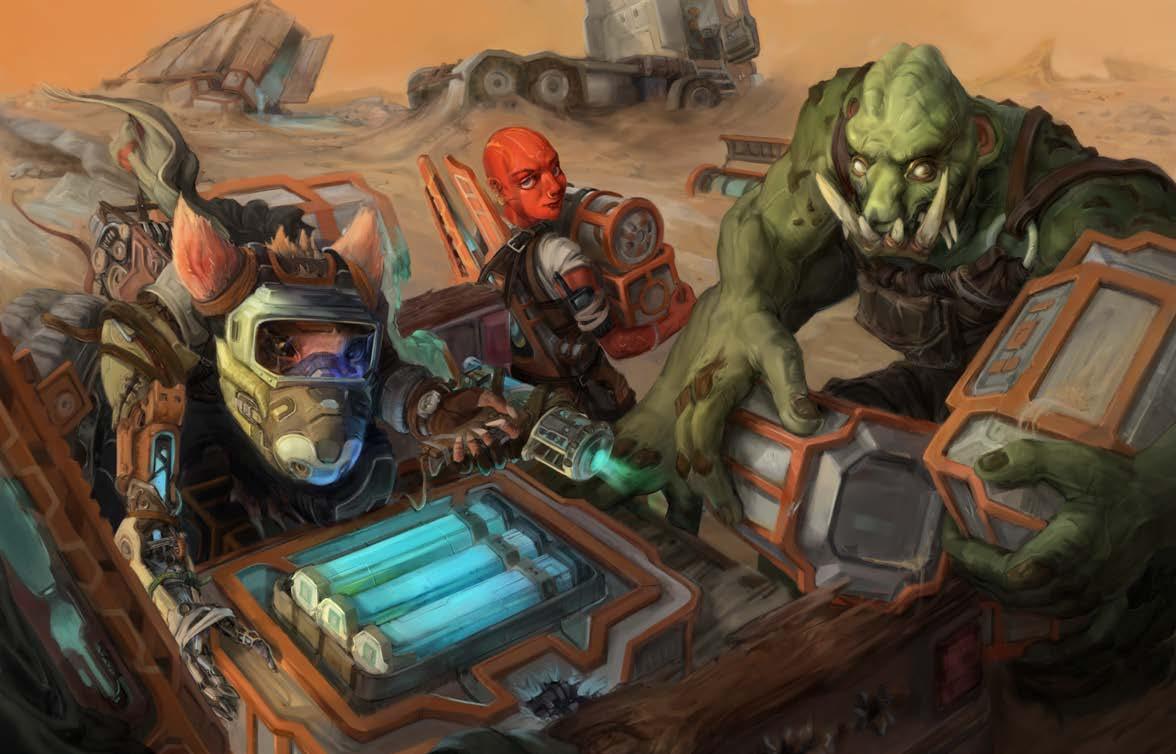
Station leadership has worked to rein the situation as best they can, attempting to both appease the ultra-wealthy and keep extreme political groups from taking advantage of the chaos. Criminal organizations that control the poorest parts of the station offer stability and protection to those who live in their domain, as long as one’s dues are paid. Long lines in front of impromptu meal centers are a common sight and endear those who feel the government isn’t providing for its populace.
AKITON
Once a haven of prosperity built on thasteron, a substance essential to the production of sublight starship fuel, Akiton’s overmining coincided with the introduction of Drift travel, effectively gutting the planet’s eminent industry. The Crash is a mixed blessing for Akiton, as the failure of Drift travel has renewed interest in what remains of the planet’s thasteron. Investors have their eyes set on refining otherwise-impure sources, as well as researching whether it can be used to fuel faster-than-light travel. However, these small gains come at the cost of widespread suffering. Due to the world’s reliance on imports, especially food, the Crash has pushed many of the citizens into survival mode. The rich hoard all they can and pick first from what few ships still come around, while the poorest starve. Residents, especially of the larger cities, indulge in whatever vices ease their worries, with blood sport being more popular than ever. The particularly desperate migrate to the only verdant patch on the planet, a failed terraforming experiment, never to be seen again. Only nomadic caravans and reclusive shobhads, no strangers to resource scarcity, have escaped this desperation.
VERCES
Although Verces thrives on trade, the tidally locked planet is relatively self-sufficient. Vercites largely have the privilege to view the Crash as an inconvenience, with travel plans canceled and imported luxury goods delayed. If anything, Verces’s close ties to the Stewards, one of the most reliably operating organizations throughout the crisis, have provided a big boost to its public image. Though the activity of extremist groups remains a concern as always, daily life on Verces is virtually unimpeded—to the point where many celebrities have taken work vacations there while they ride out the worst effects of the Crash. The primary sign of system-wide distress is an ever-rising number of refugees fleeing worsening conditions on their home worlds. Some minimal resistance and concern have been raised about the trend, but the population at large disregards this as a fringe opinion.
The damage dealt to interstellar travel stings Vercite pride, however, nexus as it is for starship manufacturing and faster-than-light innovation. Certainly, if anyone could puzzle out and resolve the Drift Crisis, wouldn’t it be some manufacturing titan like Redshift Revolution, Terminator, or Ringworks? That these iconic brands haven’t saved the day is undermining their legendary reputations. It’s not for lack of trying; they and other companies are recalibrating their Drift engines to navigate the damaged plane while devoting substantial resources to researching and developing alternatives to Drift travel. The Norikama Syndicate, in particular, promises a new form of faster-than-light technology, explored further in the Blazing Speeds adventure hook (pages 98–103).
IDARI
As a colony ship in perpetual orbit, the Idari didn’t suffer same the catastrophic fate as those starships the Crash caught in the Drift. That said, the Crash did trigger recurring power outages across the Idari. After a week of grueling repairs, the starship restored its essential functions. Thankfully, as most of its smaller starships were close to home at the start of the Crash, the Idari has been able to provide modest assistance to nearby Pact Worlds.
That said, the Drift Crisis has placed immense pressure on the Doyenate to direct the Idari forward—with an outspoken minority insisting that it’s time to secure new faster-than-light capabilities for the Idari, depart the Pact Worlds, and settle a more promising star system. Far more urge patience and compassion, yet the longer the Crisis continues, the more the relocation proposal spreads. After all, kasathas have spread far beyond the Idari over the decades, and at this point, the starship is more of a cultural symbol than a lone vessel sustaining a people.
If anything, kasathas are departing the Idari in greater numbers than ever before. Despite the danger—or perhaps because of it— young kasathas still elect to risk their Tempering travels during the Drift Crisis. The uncertainty seems to thrill many, who crave the chance to witness the Drift’s new idiosyncrasies personally, as if the Crisis were a personal test. These youths flock to any departing starships, seeking passage and work.
THE DIASPORA
For residents of the Diaspora, who already live virtually separated from the Pact Worlds at large, the Crash had no real impact aside from delayed communications from companies with holdings on various asteroids or that do business with the dwarven mines. Sarcesians live in isolated communities that seek no assistance from outsiders; some even find they enjoy the waning of the Pact Council’s already-thin influence. Most sarcesians take pride in their self-sufficiency during the Drift Crisis, joking about the weak temperament of other species. Meanwhile, pirate activity is on the rise within the Diaspora and beyond. Where fewer official channels are willing to shoulder the burden of riskier Drift travel, the Free Captains see an opportunity both to make money and to endear their activities to residents of the Pact Worlds. Since law-enforcement agencies already have their hands full dealing with the aftermath of the Crash, quasi-legal ships with dubious safety protocols ferry people with little interference. This provides an effective alternative to raiding, which has become harder due to the greater security afforded to each corporation ship. The hardiest of the Free Captains still launch regular raids, knowing that the price of goods nowadays is well worth the extra effort.
EOX
Although disrupted shipments might aggravate some residents’ macabre appetites, Eox’s undead population could theoretically ride out the Drift Crisis in isolation—yet logistics aren’t the real problem. The Crisis leaves the Pact Worlds sufficiently vulnerable that the Corpse Fleet, a military organization that split from the Eoxian navy in opposition to
the ratification of the Absalom Pact, has decided that this is the ideal time to invade the system, reclaim Eox, and even purge the Pact Worlds of the living.
This isn’t just a military threat, but a political one. Despite Eox’s consistent compliance with and contributions to the Pact, many throughout the system still don’t trust their undead neighbors and assume that the bone sages support the Corpse Fleet in secret. The truth of the matter is up for debate, but the situation is undoubtedly more complicated than it first appears. The nuance is lost on many, and schisms between the living and unliving—as well as between Eox and the other planetary governments—weakens the Pact Worlds as a whole. The Corpse Fleet Opportunists adventure on pages 70–73 explores this conflict further.
TRIAXUS
The Skyfire Legion, a regimented mercenary group originating in Triaxus’s long history, has been busier than ever. While there’s always a need for extra firepower throughout the Pact Worlds, the unstable condition of the Drift has both made it more difficult to protect distant stores and spurred countless opportunistic raids, driving demand for armed guards. Those Skyfire professionals in the Pact Worlds have partnered extensively with the Stewards in helping maintain peace, whereas cohorts abroad find the Drift too unreliable to journey home and have established impromptu field headquarters to sell their services in equally tumultuous systems.
Meanwhile, on the dragon-ruled side of Triaxus, the dragoncorps find themselves in an interesting position. The collapse of trade routes and timely travel has severely hampered many dragons’ ability to meddle with interstellar politics as well as their bottom lines. This inconvenience is a cause of great frustration—but on the other hand, nowhere else in the Pact Worlds is as well-informed. Dragons value information just as much as they value traditional riches, and such currency has retained its value following the Crash. It’s said if one needs information about anything, it’s somewhere on Triaxus.
LIAVARA
With limited support in enforcing their sovereignty, the barathu authorities of Liavara struggle in preventing invasive, unsanctioned, and destructive gas mining by prospectors and unscrupulous corporations. This has spurred Bretheda’s governing body, known as Confluence, to petition for Liavara to be granted greater protections. The barathu aren’t just worried about preserving the planet’s ecosystems; shortly after the Crash, Liavara’s barathu-like Dreamers began singing unfamiliar songs, as if harmonizing with some new phenomenon. These songs have triggered vivid dreams across the system and caused dramatic readings on psychic instruments.
Meanwhile, the insectile residents of Nchak, one of Liavara’s moons, use this discontent to push for Liavara to be recognized as a full-fledged member of the Pact. This sentiment existed long before the Crash, but the blatant corporate exploitation and disregard for regulation in its wake have supercharged such ideas into an all-out political movement.
BRETHEDA
The Crash has strained Bretheda, not least because of illegal moves made by corporations to mine Liavara, disturbing that planet’s native Dreamers and fueling theories about some imminent psychic disaster that only those enigmatic beings can sense. Meanwhile, while Bretheda’s barathus can live within the planet’s gases, most other inhabitants of the Pact Worlds can’t, so disruptions to shipping predominantly threaten the survival of the latter residents, while offering few means of egress.
Media outlets and the Pact Council have placed mounting pressure on the Confluence to research Drift alternatives. Preliminary breakthroughs in psychic teleportation looked promising, but seemingly further aggravated neighboring Liavara’s residents. Confluence has also begun exploratory research into extending the long-range communication abilities of Confluence agents—a topic which has previously been taboo. Still, while the amalgam leadership works on grand solutions, a growing number of barathus become frustrated by the aloof approach to problem solving, electing instead to depart Bretheda alone or in small groups to seek distant, unimagined, and more practical possibilities.
APOSTAE
From underhanded strategies and cutthroat bargaining to plausible theories of secretive influence over the Pact Council, Apostae’s drow have a reputation for quasi-legal operations and shadowy goals. The Drift Crisis has distracted the usual watchdogs, enabling drow houses to maneuver with fewer checks to their power—though the disruption to Drift travel has impeded some of their long-range operations.
opportunity to Apostae’s doorstep, with new interest in the lost technologies of its mazelike interior bringing braver and bolder foreign expeditions from all over the Pact Worlds. Interestingly, the Crash coincided with increased activity in the mysterious portal called the Nightarch Gate. Some hope it holds some secret to non-Drift faster-than-light travel, while others see it as nothing but an extraplanar hazard. Nonetheless, Apostae’s
powerful drow houses are more than happy to line their pockets with exorbitant expedition and housing fees in the nearby city, especially during a time when system-wide maneuvering is more time-consuming and exhausting than normal.
AUCTURN
Already a hotbed for disturbing cult activity, Aucturn has drawn a startling number of visitors since the Drift Crash. For some, the anarchy of Aucturn is little worse—or even a comforting escape—compared to the chaos they’ve fled elsewhere in the galaxy. Others embrace dangerous faiths out of desperation in an attempt to understand and adapt to the catastrophes around them, granting the likes of Nyarlathotep and the Devourer more followers. Longtime cultists have also flocked here for sundry reasons, most worryingly following claims that Aucturn has developed a discernable heartbeat palpable only to the most accomplished mystics. The Midwives of Gravid Mound chant that the immense egg they guard is showing signs of hatching, the orocorans of the Citadel of the Black claim the planet’s ichor springs have developed an unfamiliar taste, the toxic clouds take on ever more ominous shapes, and countless other chilling omens hint that the Drift Crash might spawn yet greater misfortunes for the Pact Worlds.










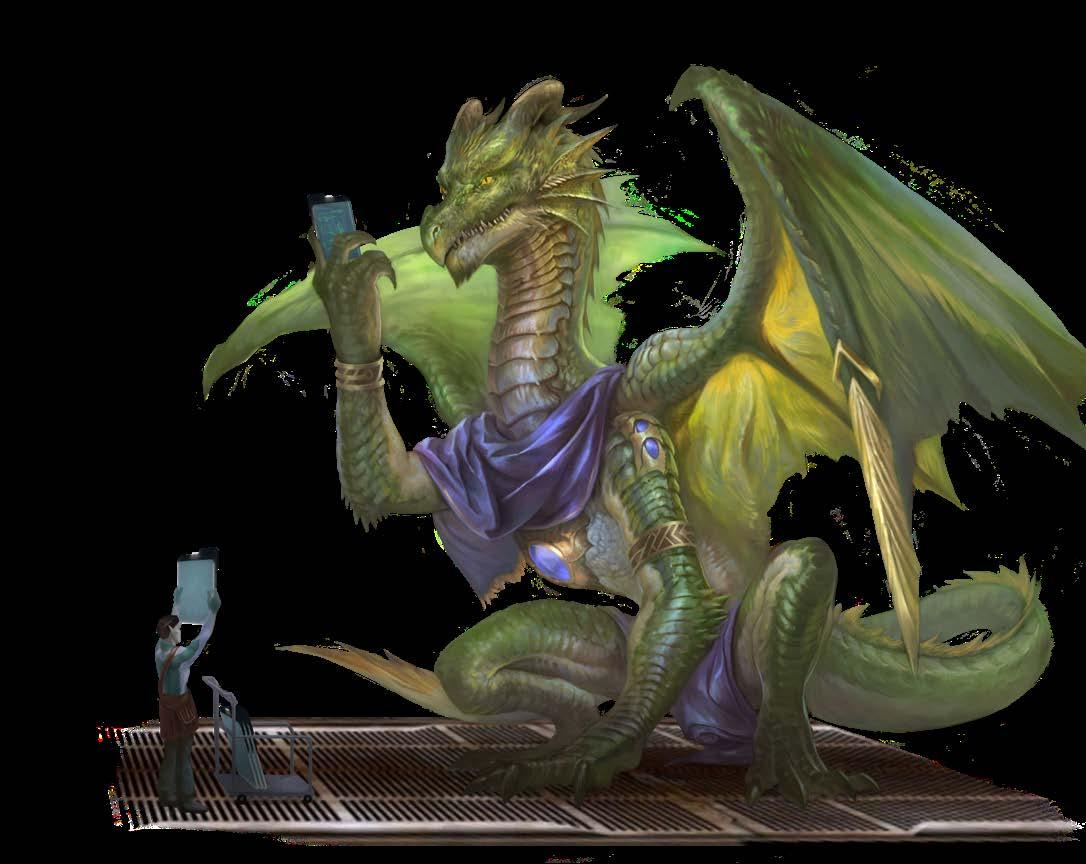










Spurred by a rebel pahtra plot to assassinate the high despots, most of the Veskiarium’s fleet was in transit when the Drift Crash struck, scattering or erasing many of its ships. The Veskarium assumed emergency protocols, preparing for conflict with apparent Azlanti threats and regaining control over wily planetary holdings whose rebels and discontented officials exploit the Drift Crisis for their own ends.
VESK PRIME
To rebuild the scattered fleets, High Despot Vindaskayo Swarmripper has conscripted vast swaths of civilian industries and instituted dramatic drafts. Meanwhile, Command Prime is operating in overdrive, not just to quash rebellions across Veskarian space, but also to control the messaging of its military response to Pact Worlds allies, whose dignitaries have responded with shock at some of the empire’s draconian strategies. Salving the Pact Worlds’ feelings is secondary to ensuring stability, however, and Vindaskayo has mobilized her infamous peacekeeping agency, colloquially called “the Hammers,” to take preventative action. Outrage grows in the capital, and tensions rise as the Hammers patrol neighborhoods and instate curfews.
VESK-2
The Drift Crash had little initial impact on this tranquil ocean world, but tremors rocked the surface a few weeks later, damaging some of the ancient ruins. Since then, scans have detected something massive beneath the waters, though it disappears whenever teams attempt a closer examination. Troublingly, the sightings are occurring ever closer to the Trafodi ruins, and residents are preparing for presumed disaster should the entity ever reach its destination.
VESK-3
Scandal left Vesk-3 vulnerable. The planet’s High Despot Teret Kahan (LN male pahtra soldier) voluntarily submitted to questioning by the council after allegations of his involvement with pahtra revolutionaries on Vesk-6. However, his interrogation coincided with the Drift Crisis, and limited communication has fueled rumors that the Veskarium quietly disposed of Teret, further inciting Vesk-6’s pahtras. Meanwhile, the Veskarium has appointed a steward, nicknamed Mazura the Cruel (LE female vesk soldier) to maintain order. She has relentlessly conscripted skittermanders to assist rebuilding efforts (and, in turn, secure her a permanent promotion). However, these efforts are exhausting both Vesk-3’s people and its ecosystems, driving opposition from Xenowardens and skittermander partisans inspired by the Hidden Hand rebels in Command Prime.
VESK-4
Although previously scoffed at for her sympathies toward conquered species, High Despot Kamilzanva “the Diplomat” quickly rallied Vesk-4’s population after the Crisis to support
its beleaguered neighbors, earning her system-wide respect. Not only have the planet’s mines supplied shipyards’ breakneck production, but the world’s solarians have helped to detect and stabilize regions scarred by the Drift’s influence. As Vesk-4 thrives, Kamilzanva leverages public approval to win better treatment not only for her planet’s talphi citizens, but also for other non-vesk species in the system. To most non-vesk, she’s a welcome moderator; to some of her colleagues, her populist agenda reads as a bid for power. Even now, her critics orchestrate sundry schemes to silence her through politics or even assassination.
VESK-5
With the combined disruption of the Maw and rebellion on Vesk-6, Spaceport 5.1 has become the outermost Veskarian settlement in the system. Increasingly, the settlement receives not only refugees but also those battered starships that limp into the Veskarium after surviving Drift Crisis trials, making Spaceport 5.1 an unlikely bastion of comfort and unity. That said, dangers brew within Vesk-5 itself: fragments of extraplanar material have manifested in the atmosphere, suggesting that the Drift has begun bleeding its matter into the Material Plane, creating islands of confused spectra, demons, and more.
VESK-6
With the empire’s military fragmented, Pulonis stoked pahtra rebellion. The Veskarium struggles to quash these decentralized partisans, many of who are besieging Starlance and other settlements. High Despot Kavadroz, once known for his relative civility, has declared martial law to maintain order. However, most of the Veskarian soldiers on this world are pahtras torn between their imperial oaths and their neighbors’ plight, and each of Kavadroz’s tyrannical countermeasures erodes his forces’ loyalty. With the planet torn by warfare and Command Prime distracted, both sides are amenable to outsider mercenaries joining the fray.
THE MAW
The Drift Crash expelled a maelstrom of extraplanar material that now swirls around Vesk-7 and Vesk-8, making Drift and mundane travel through it so dangerous and unpredictable as to be considered impossible. Few brave the debris and alien energies to reach or escape these planets.
Most residents have exploited this newfound isolation to advance personal agendas, often with dreams of independence, desertion, and secession. However, the Maw has devastated the
native kothamas (Alien Archive 3 64). Where once they found peace in stargazing, those kothamas who gazed too deeply into the Maw developed an infectious rage—a stark contrast to their sacred pacifism. These Mawspeaker kothamas, with auras that stoke violence rather than peace, now rampage widely and comprise a sizable minority on both planets.
Vesk-7: The Drift Crisis both shielded Vesk-7 from the empire and also cut off the planet from supply ships, giving rise to insurgent factions that are competing for the planet’s limited resources while founding petty states on the frozen world. High Despot Sarthis Wrathmaker now controls only a fraction of Vesk-7, and insider reports suggest she’s made overtures to High Despot Jularaz on Vesk-8 to combine forces and transform the planets into an independent state.
Vesk-8: Ambitious and unscrupulous, High Despot Jularaz the Frozen is not one to forgive or forget. When the Starfinder Society exposed his initiative to synthesize shimmerstone into an unstable, combat-enhancing drug that he could distribute for clout and profit, the Veskarium sanctioned Jularaz and was already exploring his possible replacement. The Drift Crisis provided a crucial reprieve. Jularaz has entertained Vesk-7’s proposals of alliance and secession, but he needs to defend his claims and negotiate an alliance from a position of strength. To this end, he’s recruited heavily from prison colonies, promising freedom and influence to those who would join the planet’s growing militia. While some prisoners have refused—with some planning a jailbreak to overthrow Jularaz’s secessionist dreams, hoping for amnesty from the Veskarium—many have accepted,
happy to trade imprisonment and menial labor for the chance to hone their combat skills, secure a pardon, and take revenge against the empire that imprisoned them in the first place.
CONQUEROR’S FORGE
In the absence of the Veskarium fleet, this massive war machine began churning out new ships at record speeds, often exceeding safety regulations. At the Council’s request, the Forge is mobilizing in preparation for a predicted Azlanti attack, though doing so requires bringing the Forge’s dormant engine online.
This experimental magitech is purportedly a non-Drift alternate engine created by the Church of the Conqueror. The device draws upon Damoritosh’s divine might in some way, though it’s unclear to any but its creators as to whether it carves a shortcut through Damoritosh’s realm, cleaves through space to drag two points closer together, or utilizes some other, equally destructive methodology. The technology is fraught and based on an ancient design, but the Conqueror’s true believers insist on the advantages of this “overlord engine” and have quietly hired a few outside contractors to help perfect its operation. This engine is but one solution to the Veskarium’s faster-than-light travel woes. Believing the Triunites have failed to maintain the Drift, Forge officials have responded in classic Veskarian fashion: military takeover. Deep in Conqueror’s Forge, scientists are working on a way for the Veskarium not just to repair the Drift but to usurp it, facilitating the Veskarium’s dominance for generations to come. This plan is detailed on pages 130–133.




















The Drift Crash was notably disruptive to the civilizations of Near Space, as the changes to the nature of the Drift literally redefined part of the hyperspatial geography of the galaxy. While some places found themselves cut off from the resources and information they relied upon, others suddenly found themselves with strange or dangerous phenomena on their doorsteps. Everywhere, adventurers and soldiers of fortune find their services in high demand to address the aftershocks of the crisis.
DAEGOX 4
GIDERON AUTHORITY
With their expected deliveries of new inmates and supplies to the prison planet delayed or lost, and with little offworld communication for reassurance, the Daegox Corporation withdrew its personnel through the Mountain gate to the orbiting Skywatcher starship. The prisoners on the surface have been left to their own devices. Checkpoint One has been overrun by inmates fleeing the harsh facilities of Control, seeking the relatively bucolic comfort of Bounty. As such, a growing chorus of angry voices from within Freedom are calling for an end to the corporation’s control of the planet by any means necessary. Both the Daegox Corporation and the revolutionaries seek specialists to resolve the issue, one way or another.
DAIMALKO
Already self-reliant, colossus-ravaged Daimalko weathered the Crash well. A week later, an unknown capital ship fused with unstable planar material crash-landed in one of the planet’s dry seabeds. No Daimalkans have been able to approach to identify the ship, and no one has been able to explain the reports of tekenkis (Alien Archive 3 108) battling other colossi that approach the ship, almost as though they were protecting it.
EMBROI
On the devil-controlled home world of the mollusk-like embri, the hidden infernal industries of the archdevil Occhiorasoi have kicked into high gear to profit from the Drift Crash. Several new Drift beacons appearing within the system drive galactic prominence and an influx of new visitors to the planet—though rampant abductions of anyone investigating the beacons too closely spurs rumors that Embroi acquired its new beacons through amoral means. While the inhabitants’ end goals remain a mystery, an increased presence of Hellknight vessels and new, unmarked military ships in the region worries many.
GASKAR III
The aquatic planet of philosophical vesk exiles was rocked when the mysterious glowing lines under Horizon’s Eye transformed into a portal to an uncharted location in the Plane of Water. The system’s sole Drift beacon, already suspected to have some connection to Horizon’s Eye, now transmits an undeciphered signal from the other side of the portal. Responses have gone unanswered, and authorities seek brave souls to investigate the nature of the portal and the transmission.
The expansionist military empire recovered quickly from the Crash, in part because of its technological investment into Helldrive crystals prior to the crisis. With a faster-than-light advantage, the Authority decisively chased its rival Marixah Republic’s fleet from the Acalata system and cemented its claim over Sansorgis. Other worlds have sent hordes of diplomats, traders, and scientists to Gideon space, hoping to learn the secrets of Helldrive crystals, yet the empire firmly deflects appeals to release this technology, citing rumors of political dissidents who would exploit the crystals for nefarious ends.
HELFEN-THEL
With ley line–powered teleportation infrastructure, Helfen-Thel has many new visitors hoping that the system’s famous gateways might be integratable with other systems. However, even these portals have seen an alarming number of unexplained disappearances and deaths. With no known way to re-create the teleportation errors, the Ninefold Council offers an impressive bounty on any information about the cause of these intermittent failures, or about the unfamiliar mountainous planet spoken of by the travelers who survive their unexpected diversion.
LANDAHL
The Veskarium-occupied planet saw a drastic shift of power between the guerilla insurgency of the native illyr and the forces led by Commander Adalandil as the pipeline of Veskarium supplies were cut off by the Drift Crisis. The disgraced ex-Veskarium officer Tradger Lorthal raided a stranded Steward ship ejected from the Drift, complicating the situation further by creating a political crisis with the Pact Worlds. The Veskarium diplomatic corps is in turmoil as it attempts to smooth the volatile situation, with some factions attempting to preserve the peace with the Pact Worlds and bolster Adalandil’s security forces; other diplomats clandestinely attempt to aid the renegade Lorthal in finally eradicating the illyr resistance.
MARIXAH REPUBLIC
This multi-system republic suffered when the network of Drift beacons on which it relied was disrupted by the Drift Crash. The Gideron Authority swooped in to seize the isolated planet Sansorgis, where Admiral Bentay Prengst (LN agender half-orc) averted total disaster by decisively commandeering a Triunite vessel and leading a fleet of escaping colonist ships back
to Rajadhan. Admiral Prengst is poised to create a constitutional crisis within the Republic; while bylaws state that only a duly elected member of the republic’s ruling body can become a chief representative, Prengst’s promises of bold action to rescue Flentil and Sansorgis are popular both within the various representatives and among the public, even while Triunites decry the admiral’s crime against their faith.
PABAQ
The universities and temples of the osharus’ home world prepared the planet to dissect the causes and effects of the Drift Crash. The Informed Collective, a leaderless association of scientists and philosophers, now campaigns to extend Grand Council membership to non-osharus, causing forceful counterprotests among the city’s reactionary traditionalists. Meanwhile, researchers have noticed that the expected springtime surge of magic that travels down the river Laharoun didn’t materialize this year; a call for freelance investigators was issued to discover whether it portends some additional disaster.
SZANDITE COLLECTIVE
Drift disruptions hit the four star systems comprising the Szandite Collective hard, but they weathered the crisis thanks to the unique interplanetary communication enabled by their szandite crystals. In a potentially troubling move, the hardors of Dorjo in Jonid’s Star System were spotted delivering mining and scientific equipment to the unsettled planet of Vatrigax, home to unclaimed szandite crystals and a mysterious dormant alien
life force below the planet’s surface. The leaders of Dorjo haven’t explained this unilateral move to any of the other members of the Collective, and the fonqugons of Rodnarth find themselves balancing requests of other Collective members against their own concerns about how to respond to these aggressive and unexplained actions taken by their system neighbor.
TABRID MINOR
On the copaxi home world, the pressures of rapid industrialization and ecological frailty had already made things politically delicate; the added strain of the Drift Crash served to push the planet’s population into open civil unrest. The continent of Yihil has been the center of widespread and increasingly violent protests led by the Fallen Hand, who seized upon the Drift Crisis as the latest symbol for the disastrous hubris of advanced technology. As the planetary government attempts to regain control through increasingly severe methods, their outstanding petition for Pact World protectorate status may be in jeopardy.
VARTURAN
The Coalition of Conservation mobilized to prevent panic on the brenneris’ home world, the first time in the federation’s 300-year history that the Coalition used such power to intercede. While the capital of Oksarion prepares large-scale humanitarian aid for other planets affected by the Drift Crisis, the Coalition may face its largest political crisis ever as the xenophobic protectionists of the Tranquil Waters movement gain momentum, demanding that Varturan resources go to protecting Varturan interests.
travel to unite their oppressive empire, quash dissidents, and expand their ever-growing influence across the galaxy. The Drift Crash not only brought these ambitions to an abrupt halt, it also left each of these scattered star systems painfully isolated. Without the threat of overwhelming military reinforcements, the conquered peoples of many worlds revolted against their Azlanti oppressors, leaving roughly half of the empire in states of open rebellion.
Uncertain leadership hasn’t helped. The Crash stranded a sizable fraction of arciduxes, dominuses, other nobles, and their retinues in the imperial capital world of New Thespera, an impossible distance away from their domains. Many of the other nobles across the Vast, realizing their tenuous situations while cut off from the rest of the empire, withdrew from their ancestral holdings and risked the now hazardous Drift journey as they retreated to the capital. Simultaneously, the military has recalled what starships it can to reinforce the Aristia system. In this way, the Azlanti Star Empire has withdrawn on many fronts, like a turtle retracting its legs.
Even the Aristia system is an uncertain refuge. Panicked citizens across the system convene on New Thespera, desperate for the Aeon Throne to provide some guidance or explanation. The sudden influx of refugees has overloaded the planet, whose pristine ports overflow with traffic. Peacekeepers struggle to maintain order as disrupted supply chains and infrastructural strains lead to food shortages, rioting, and looting. All the while, an expanding host of starships arrive daily. The orbiting queue has created artificial planetary rings around New Thespera.
Meanwhile, the other 11 star systems are in varying states of chaos. The Croban system’s famously productive farms now export little, not just because of Drift unreliability, but also because the hortus inhabitants have besieged Arcidux Holtinus Vedivon and his exploitative biolabs. With its arcidux stranded on New Thespera, the Oyoyo systems’ vilderaros rebelled against the Azlanti oppression of their liberties and faiths, swiftly overwhelming ground forces and nearly commandeering the local starship fleet. However, the commanding officer triggered the vessels’ self-destruct sequences, destroying most of the starships. Several larger starships survived, though, and majority-vilderaro crews are swiftly mastering the new and dangerous Drift.
The Crash seemed to widen the First World connections in the Quinander
system, flooding at least one of the planets with primal energy. Arcidux Allame Liviniu now controls three worlds and is locked in a stalemate with two canny foes: a fey collective who conquered one planet, plus an openly rebellious world where Liviniu’s once-loyal screedreep minister, Irhyo, controls vast territory as a crime boss. Arcidux Xibia Ulklasstin swiftly disappeared from the Nys system after the Crash, and while her loyal subordinates have submitted numerous reports that all is well, some on New Thespera now suspect that the Azlanti minority are being held hostage by rebels, facing execution unless they keep diverting the empire’s attention elsewhere. Authorities are quietly gathering non-Azlanti teams to infiltrate



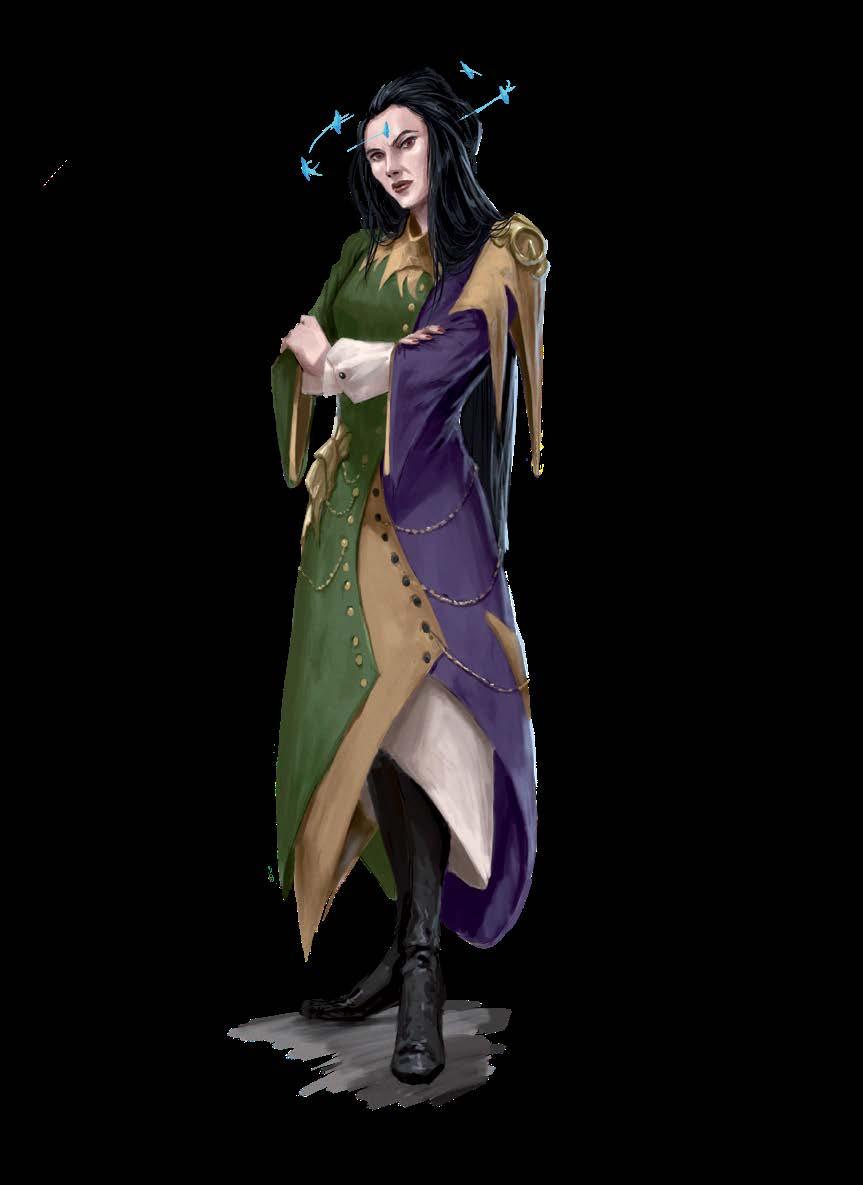
Through all this, at least the Gjor system seems to have benefited. The Drift Crash somehow suppressed the oppressive radiation of several previously uninhabited worlds, and Arcidux Lonerai Rigallius maintains order among her subjugated populations while leading expeditions to survey and settle these planets. However, the arcidux might not be acting for the empire’s benefit, as her initiatives seem designed to establish Gjor as an independent state, with Azlanti, neskinti, slivara, and tromlin inhabitants benefiting as partners and even equals. The speed at which she implemented these changes suggests that this might have been a plan in the works for years, and the Crisis merely provided the necessary
Even as the empire fragments, it clings to the distant colony world Kehtaria. Drift travel to Kehtaria seems remarkably stable, making it a crucial bastion from which the Azlanti can control nearby systems. However, this accessibility has also attracted the Veskarium’s attention, and the verdant planet seems caught between the ambitions of two weakened empires. More about
Even as Azlanti aristocrats squabble over the Crash’s cause, they agree that an alternative to Drift travel is crucial to their people’s continued existence and Great Purpose. The leading candidate is the rune drive, an experimental engine that promises faster-than-light supremacy, a return to order, and then the rapid conquest of the empire’s weakened neighbors. The Aeon Throne has even leaked hints about the rune drive being almost ready to deploy, hoping to intimidate the Veskarium and quash any vesk notions of attacking first. This play might backfire, though, as concerned rivals to the Azlanti quietly recruit adventurers to investigate, steal, and sabotage the rune drive initiative to ensure
LONERAI RIGALLIUS










